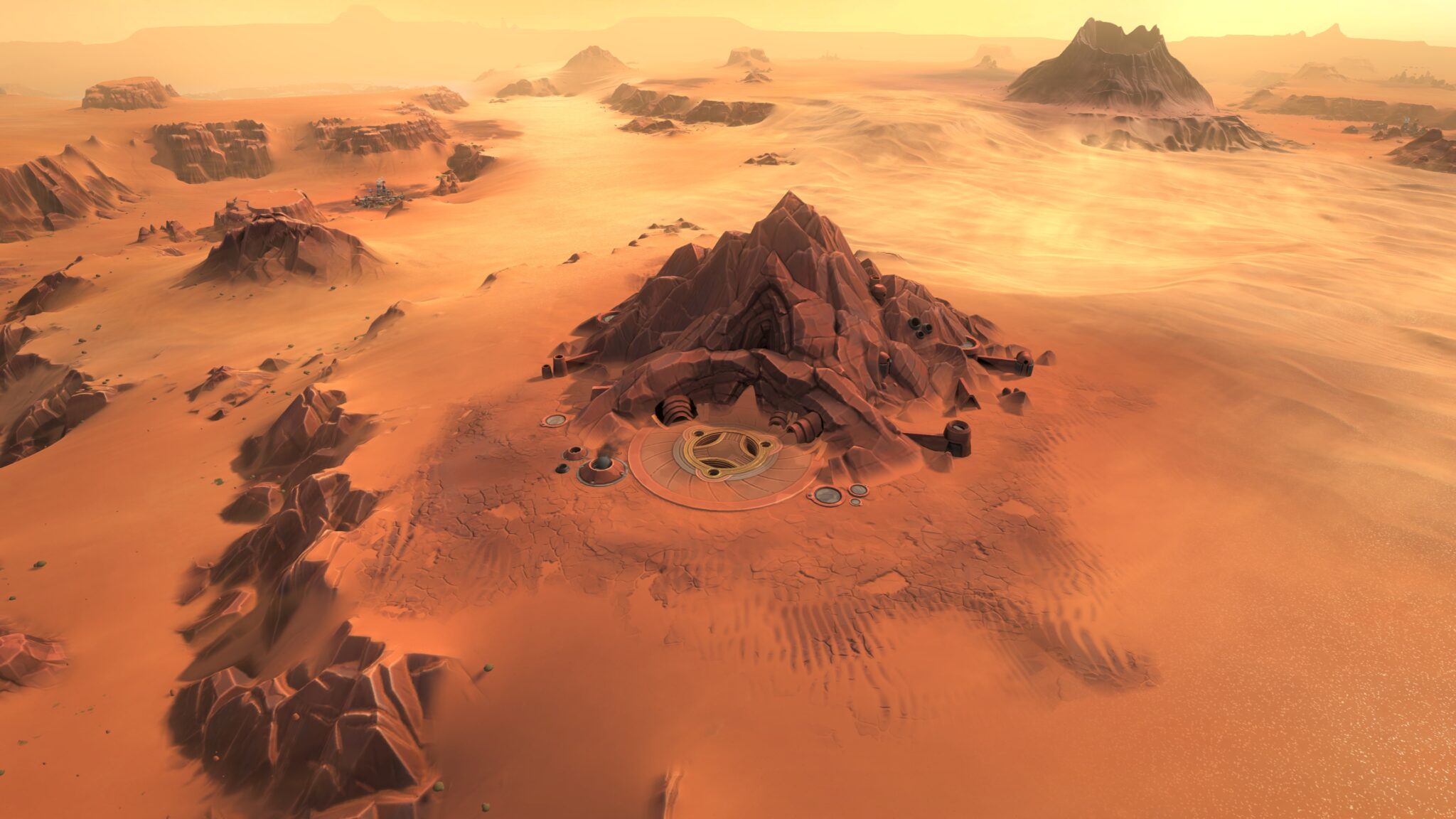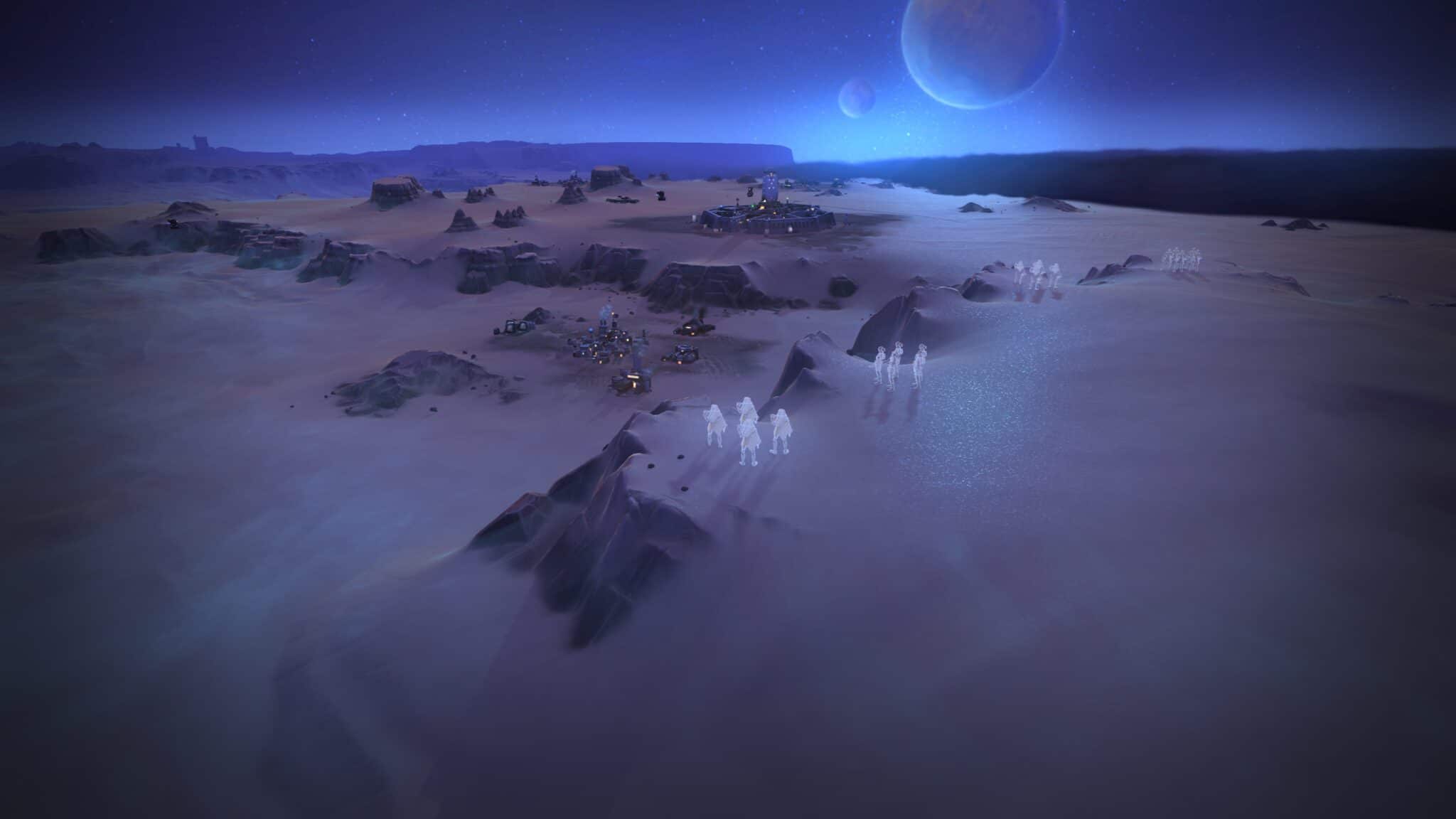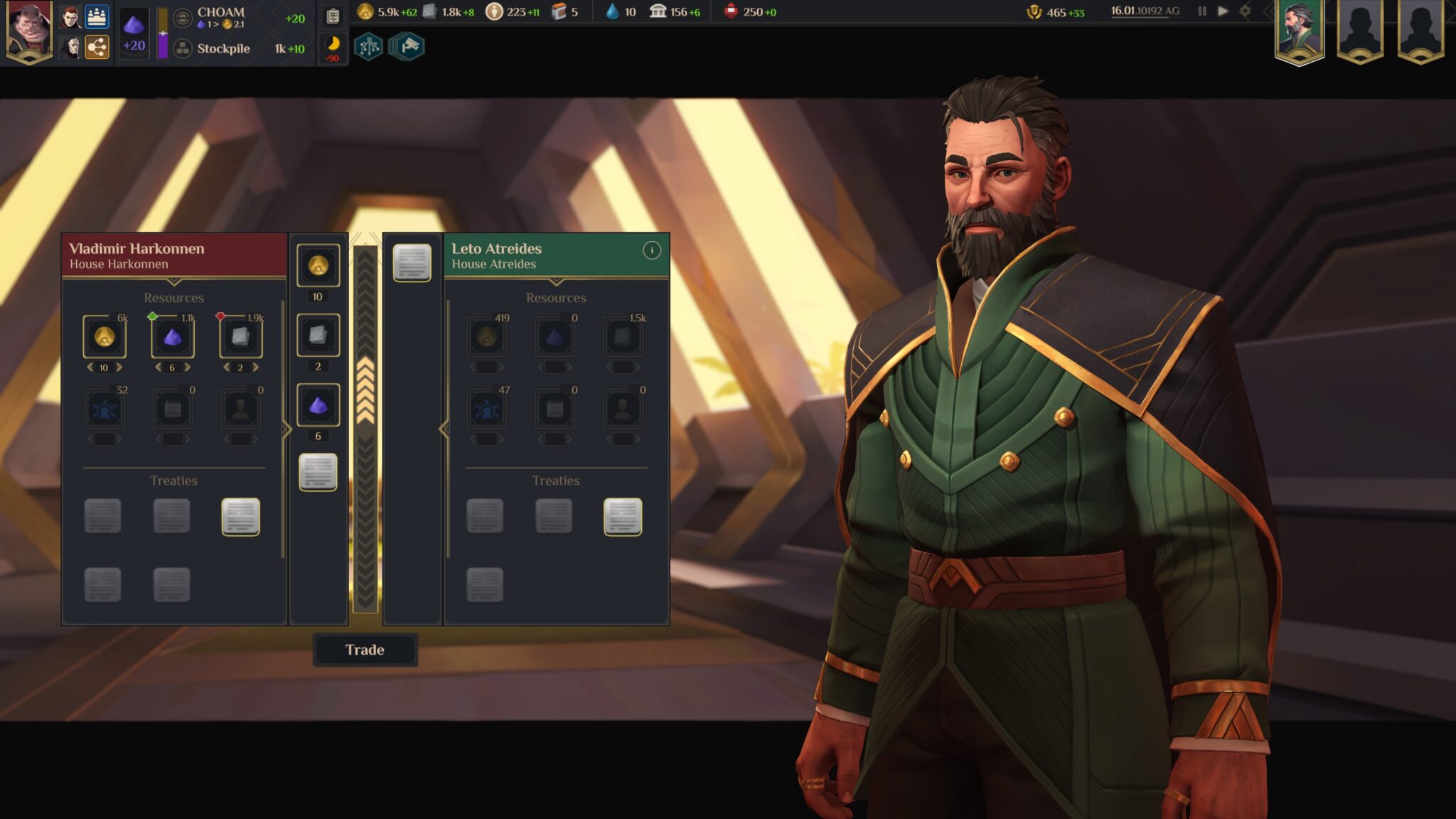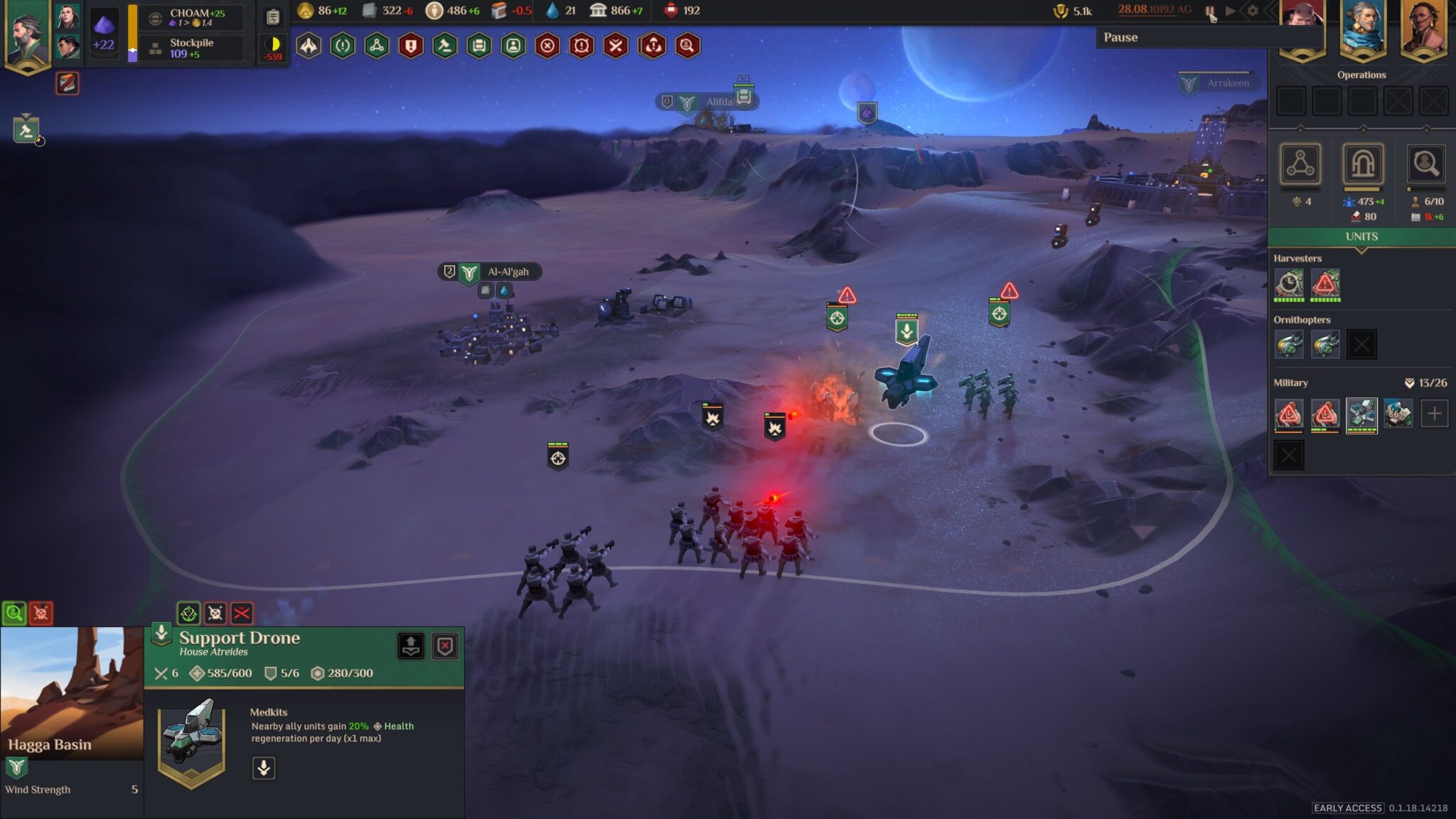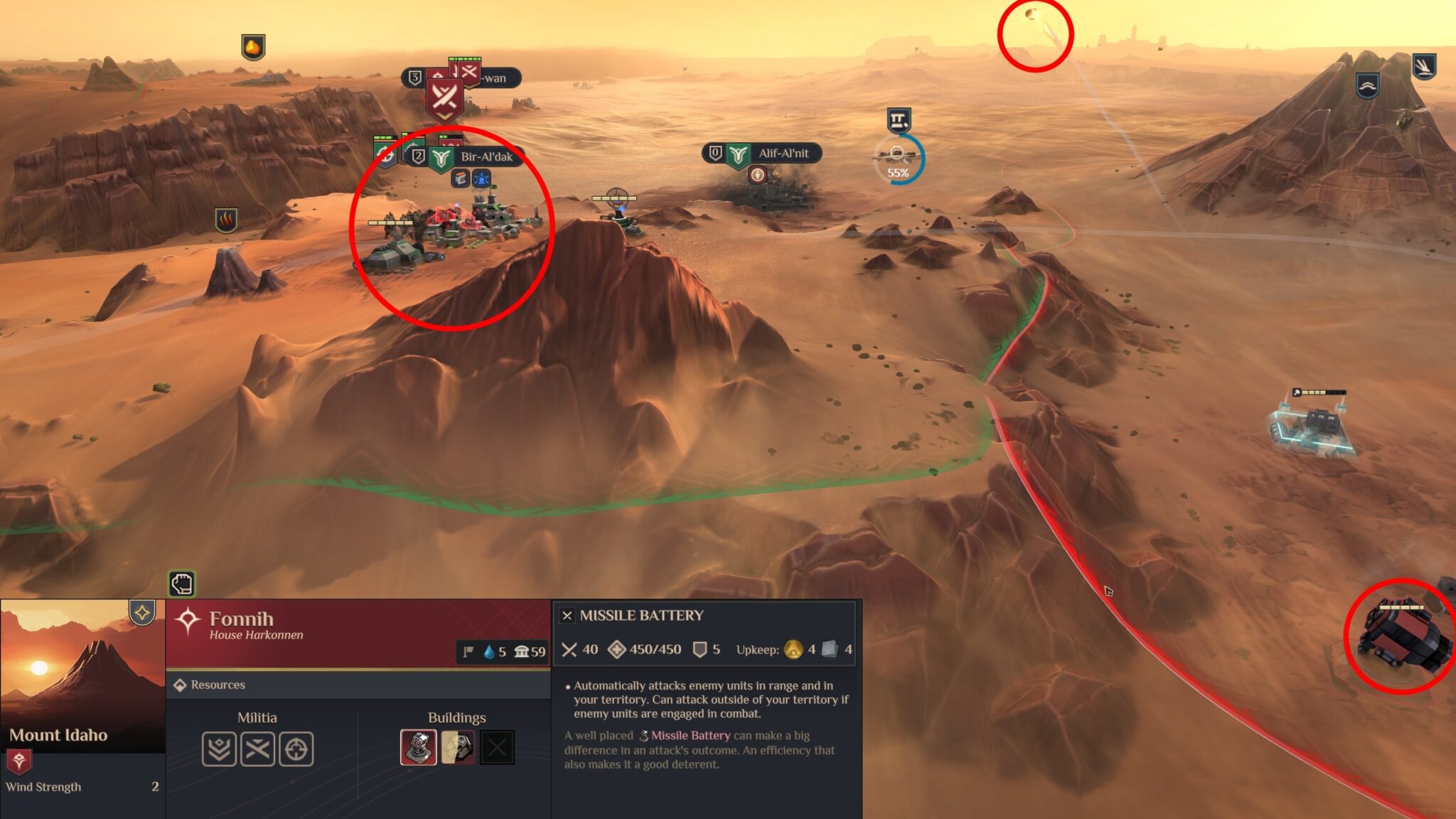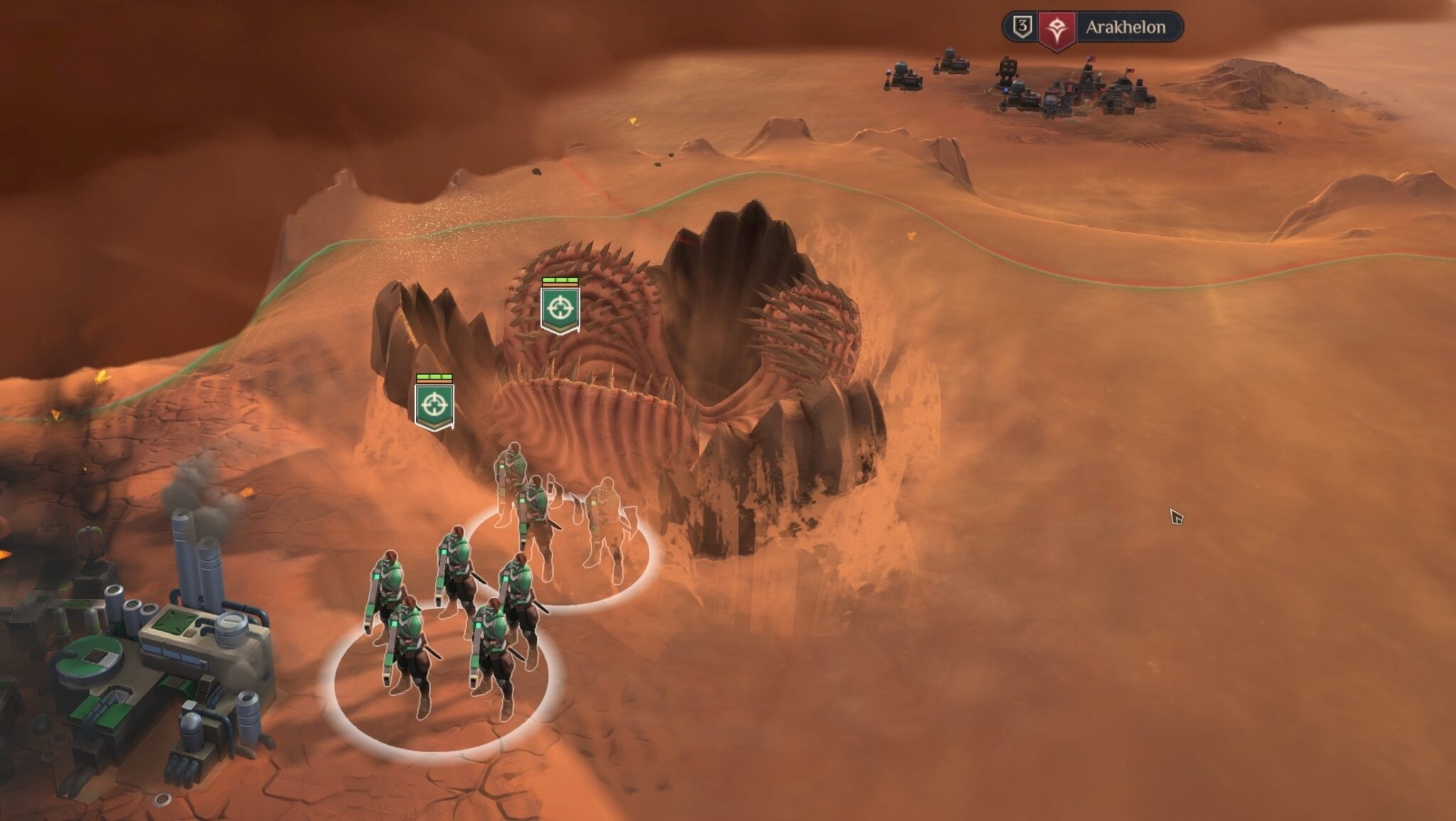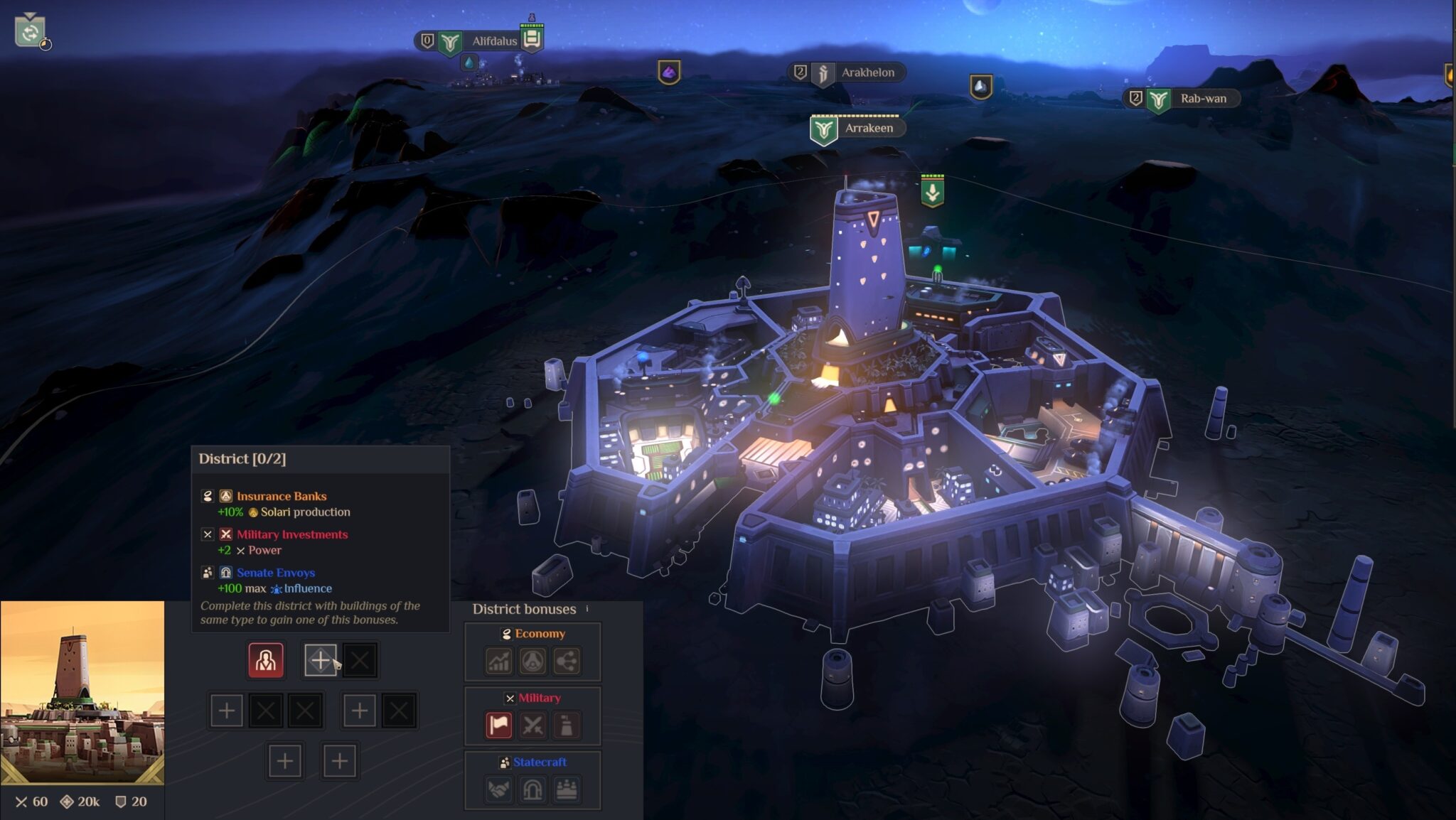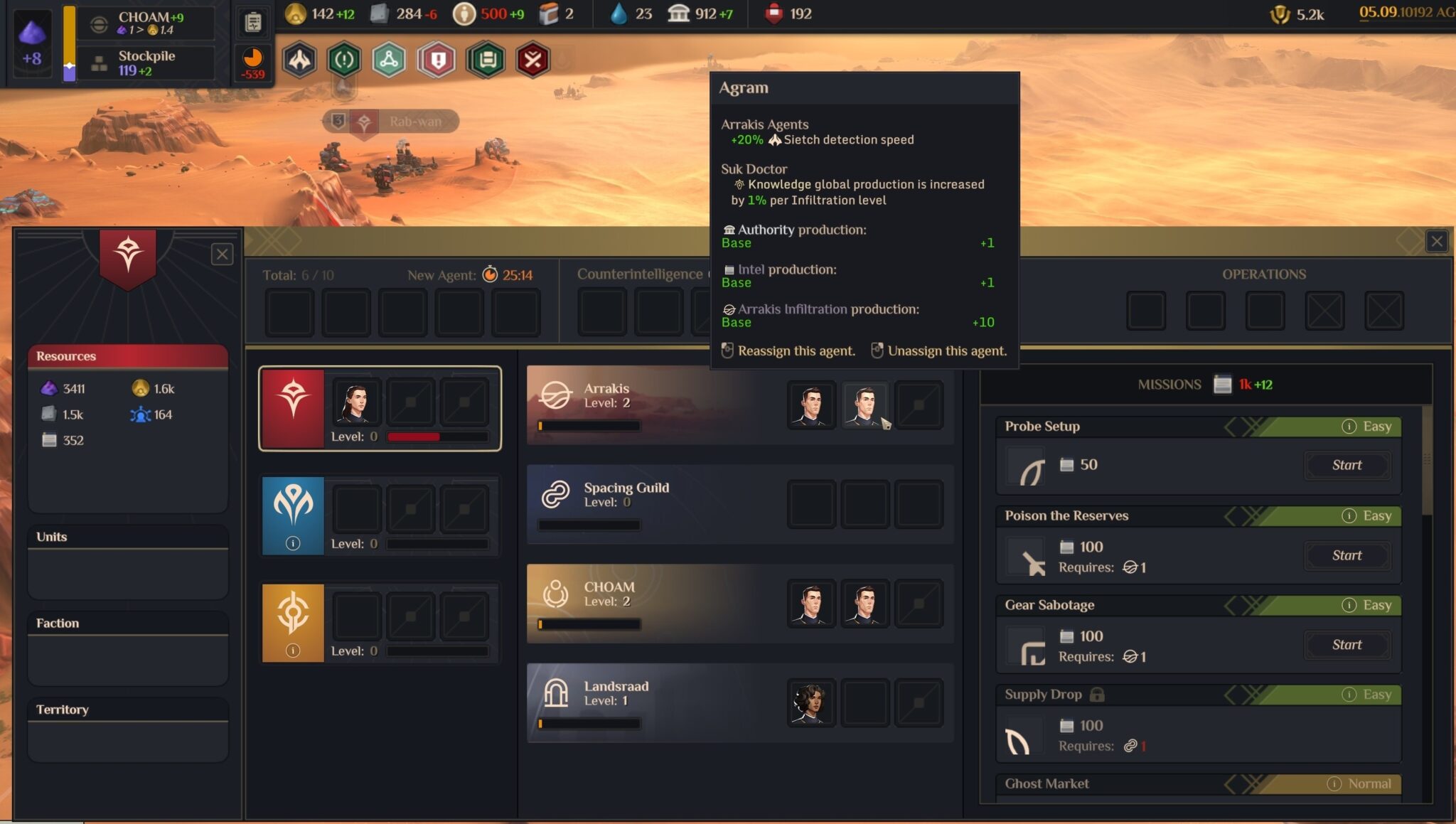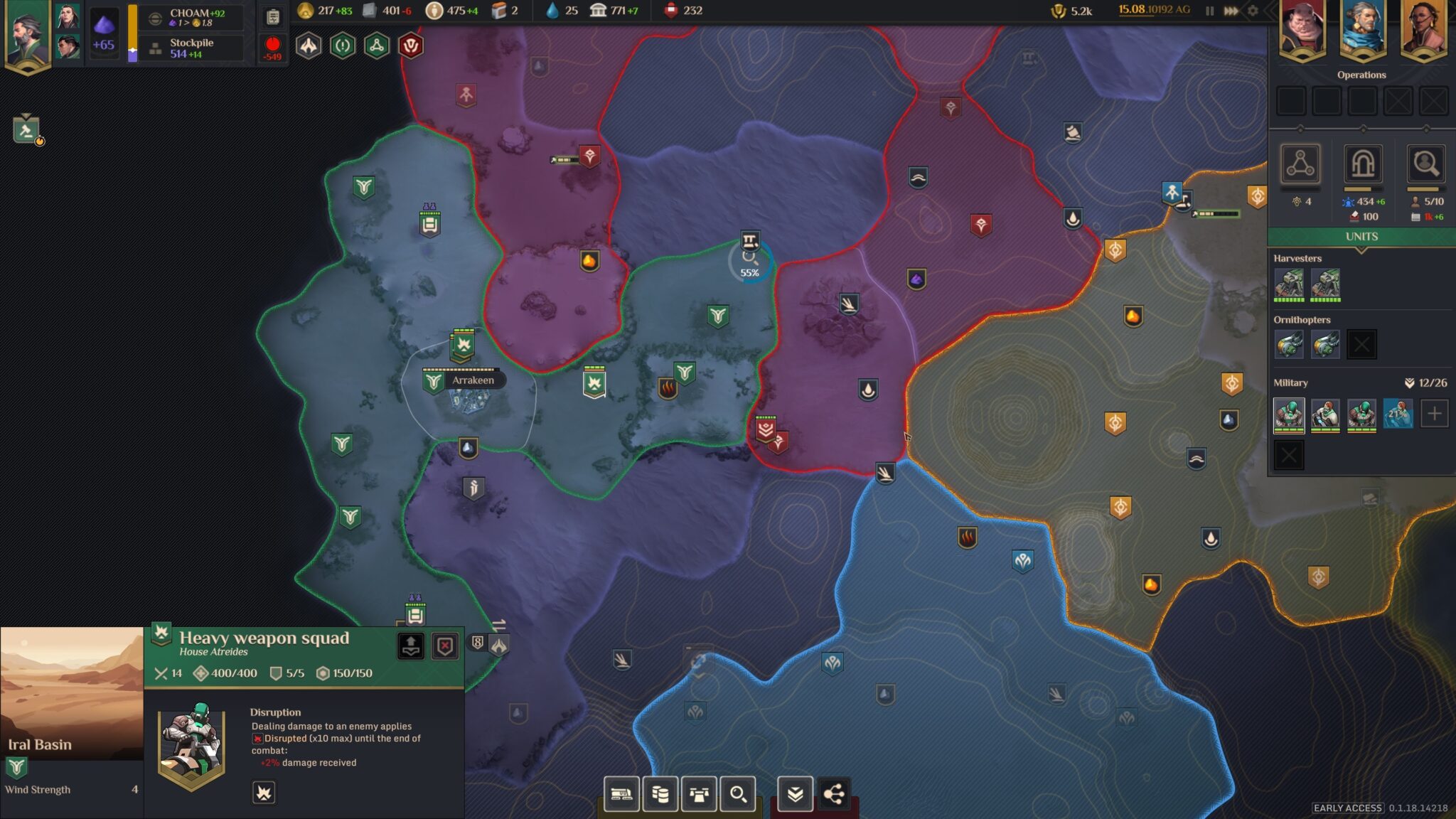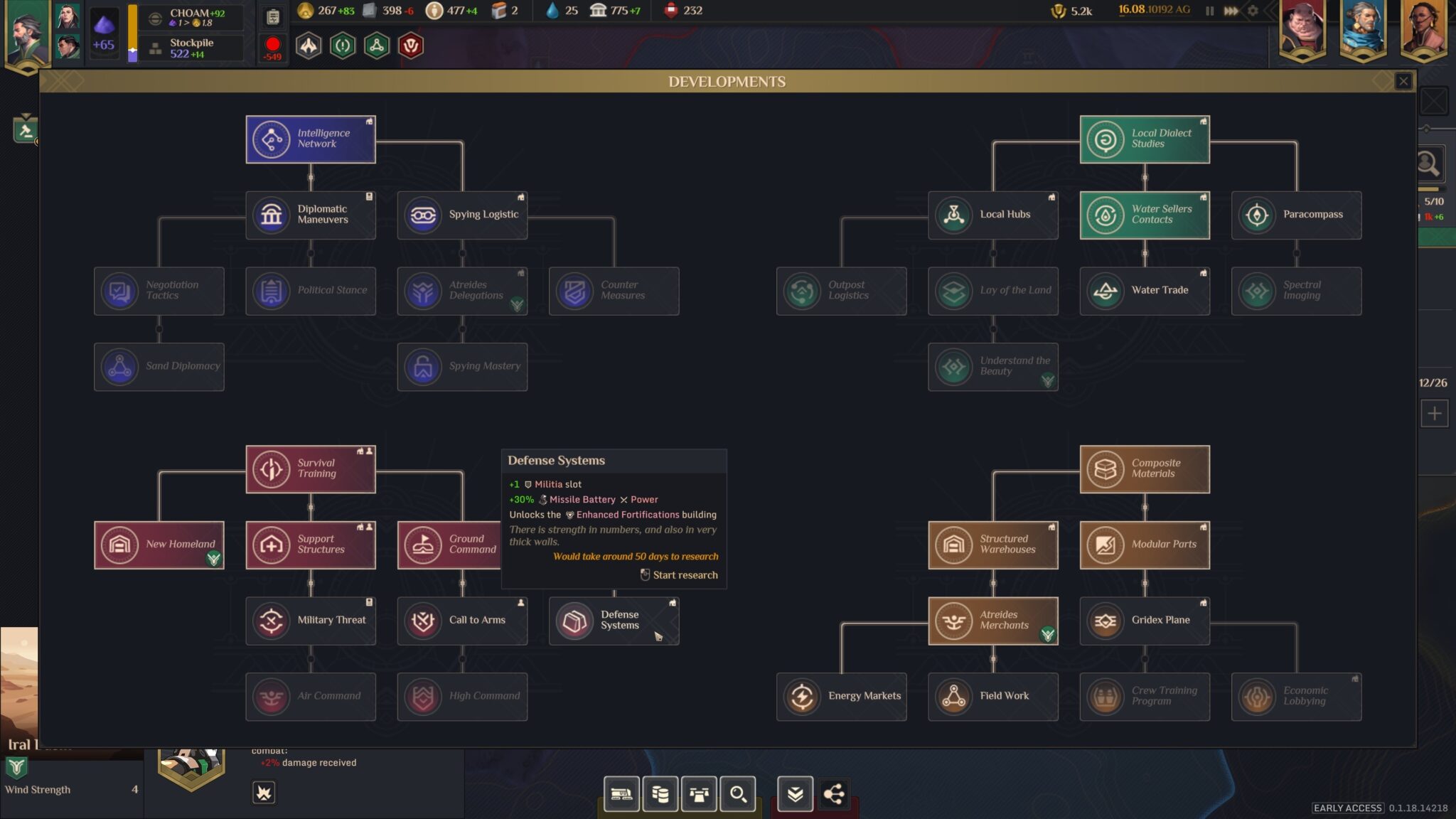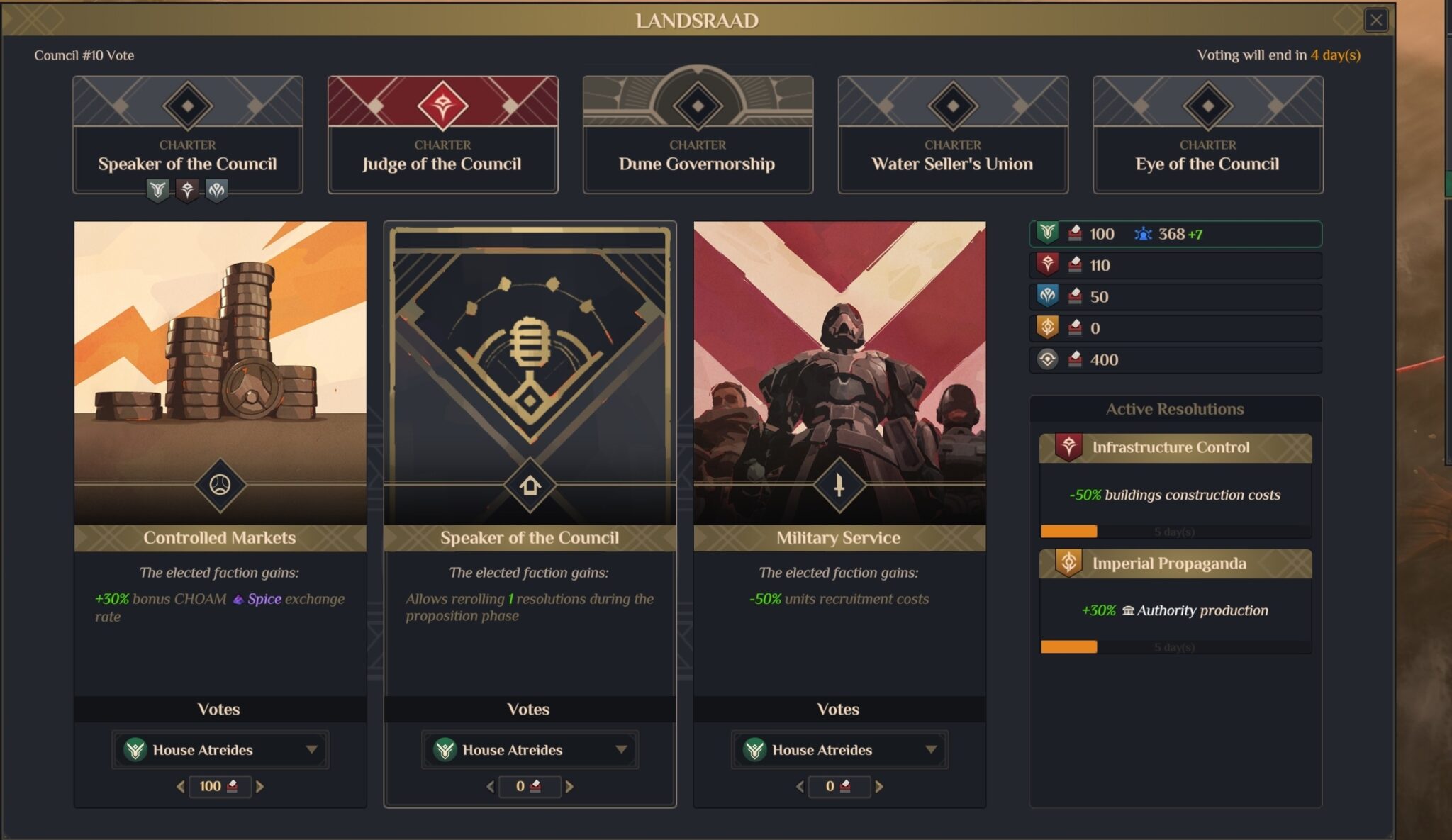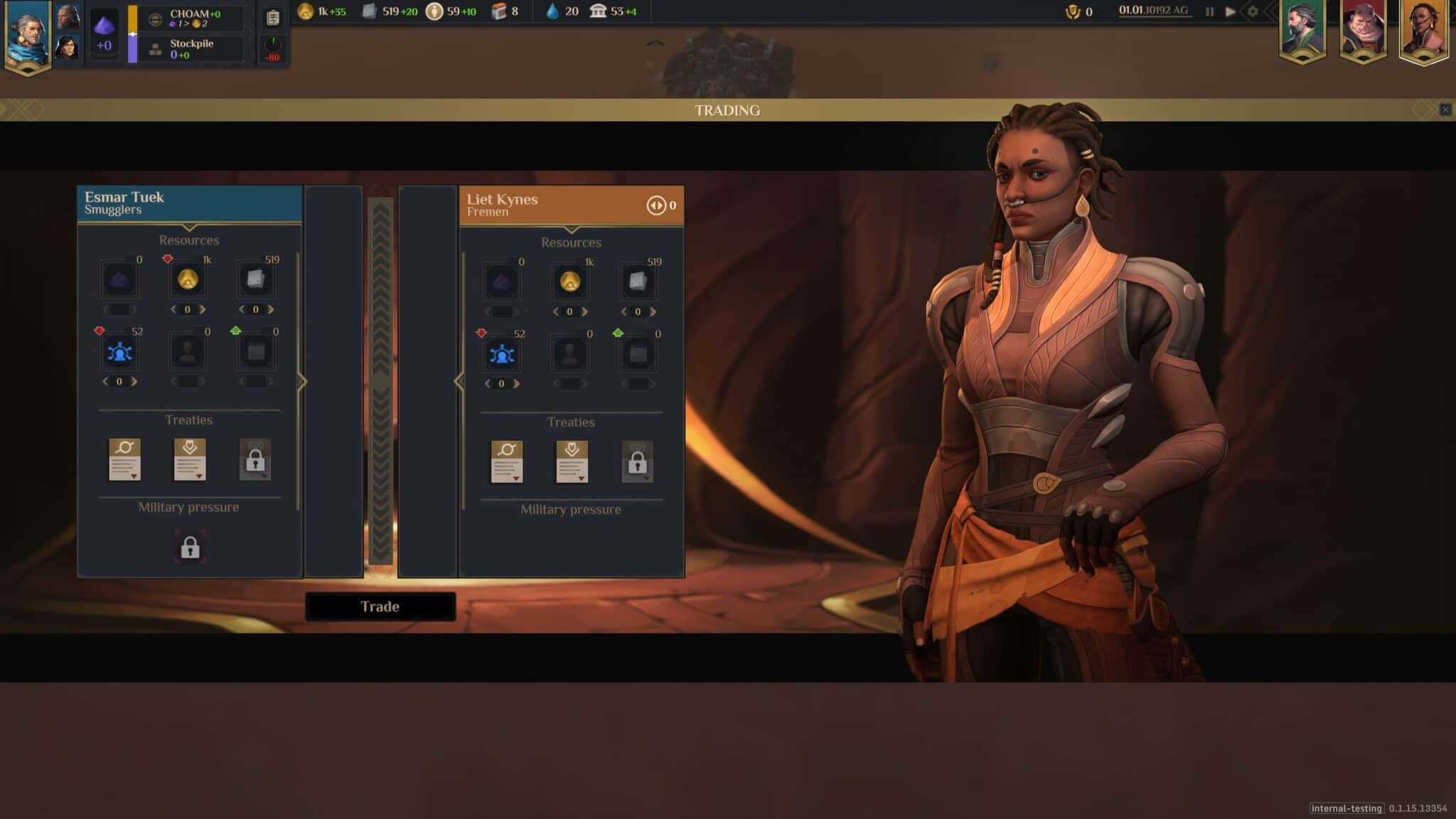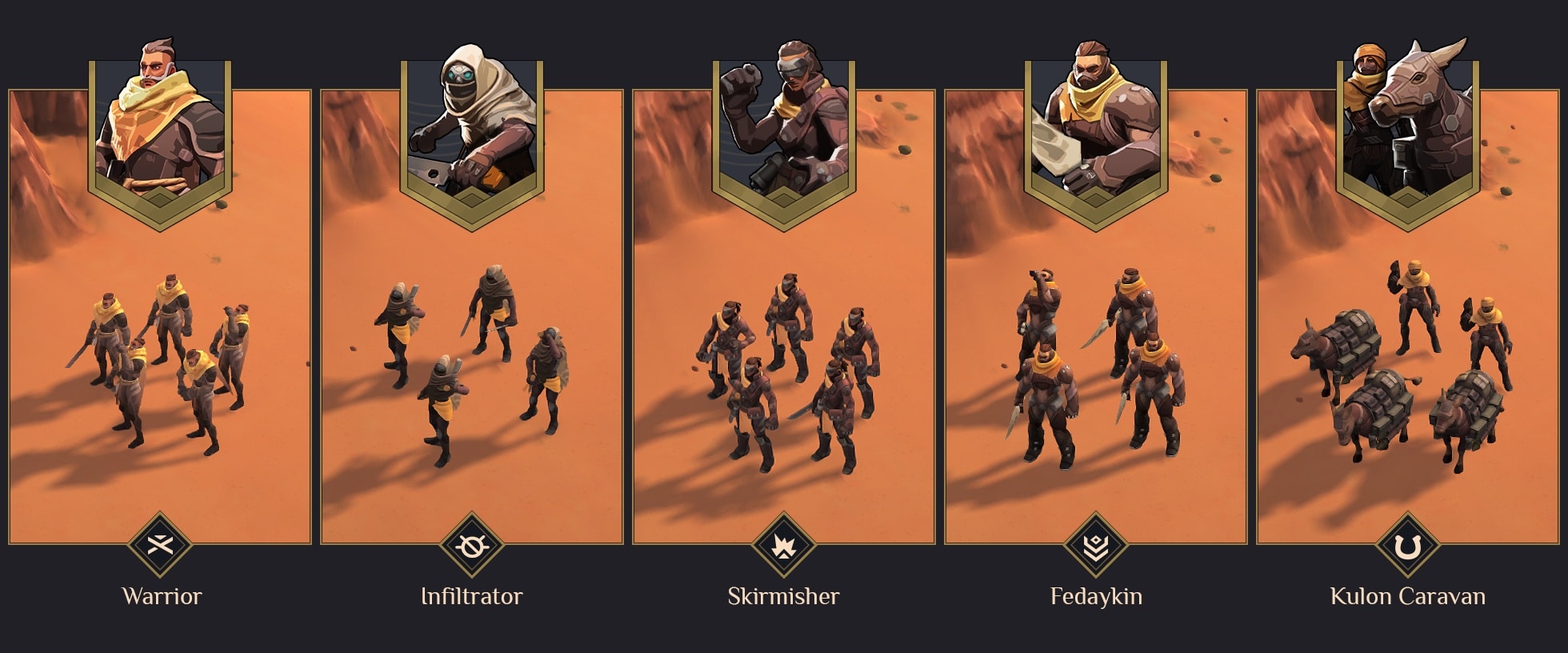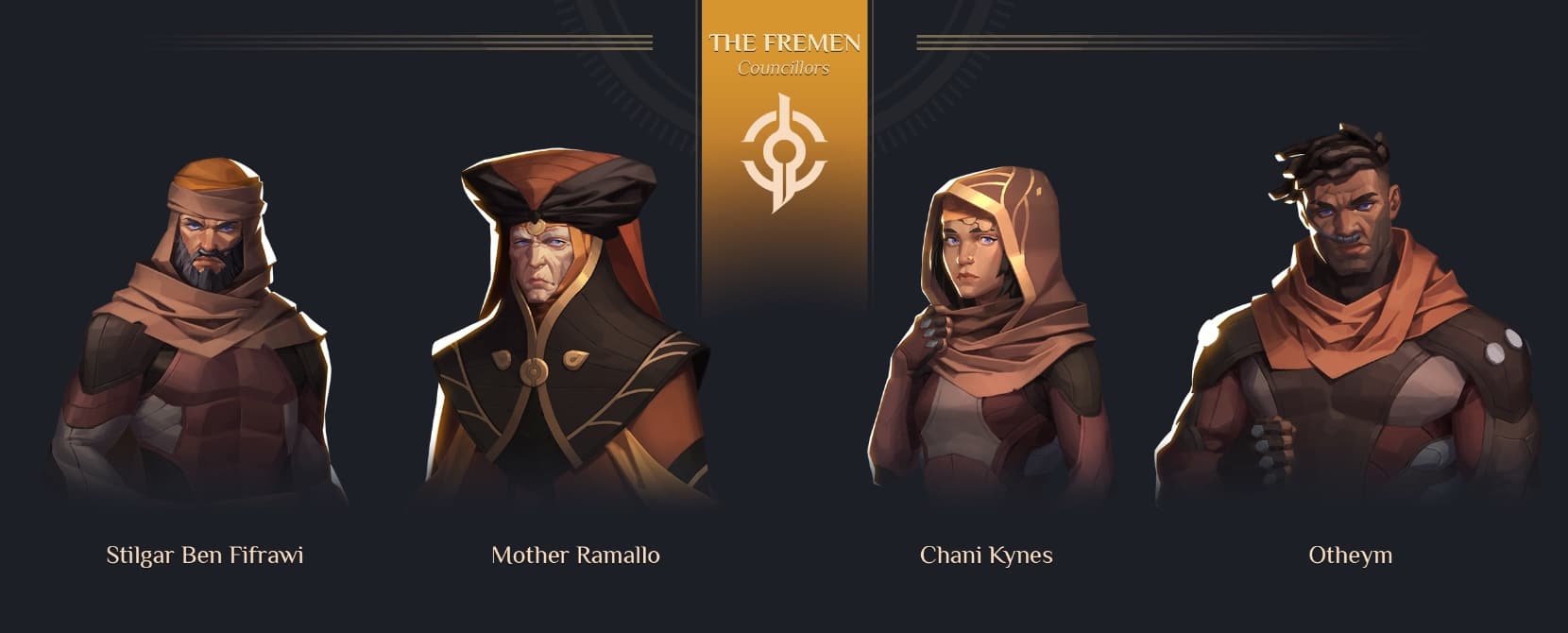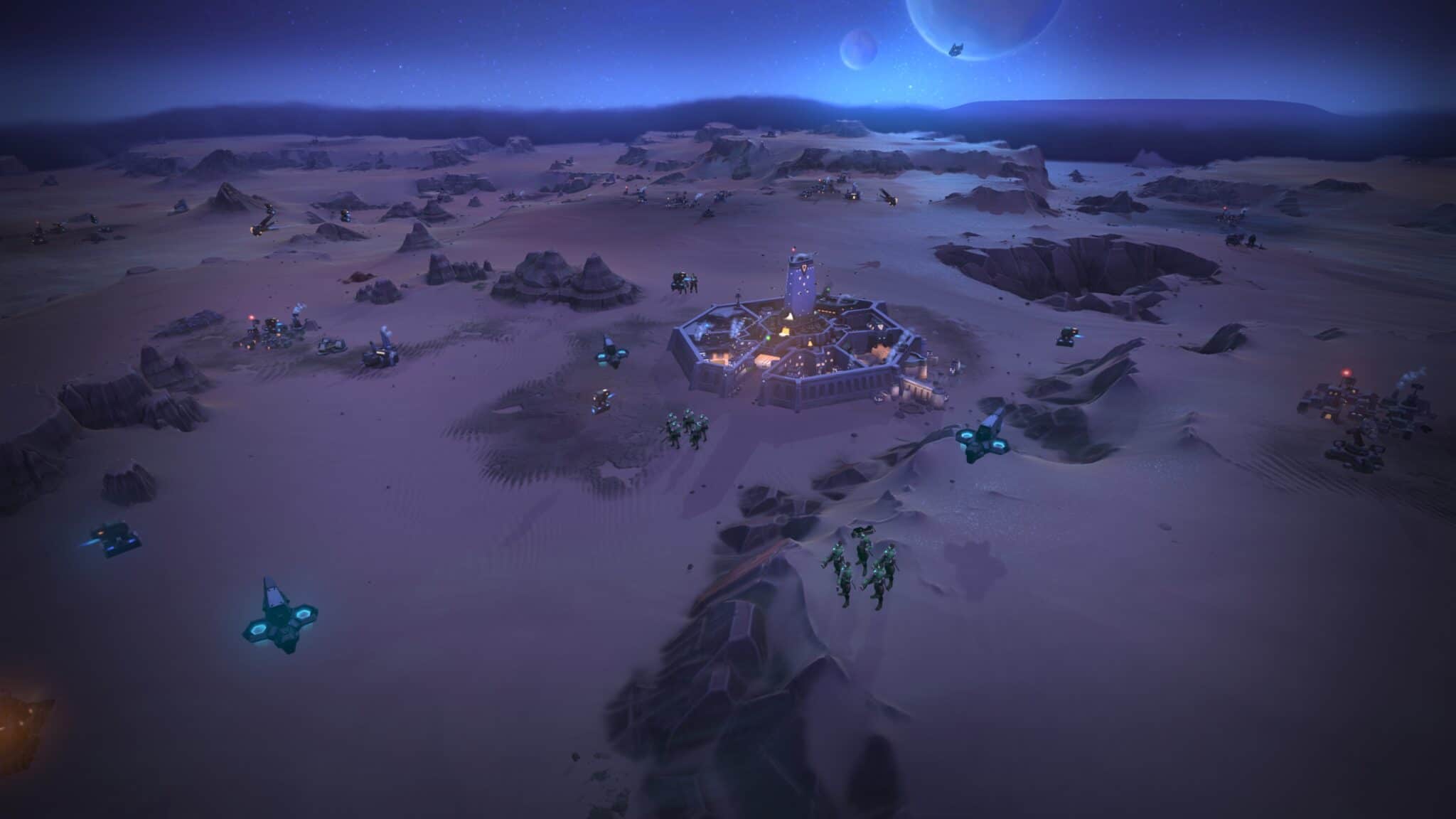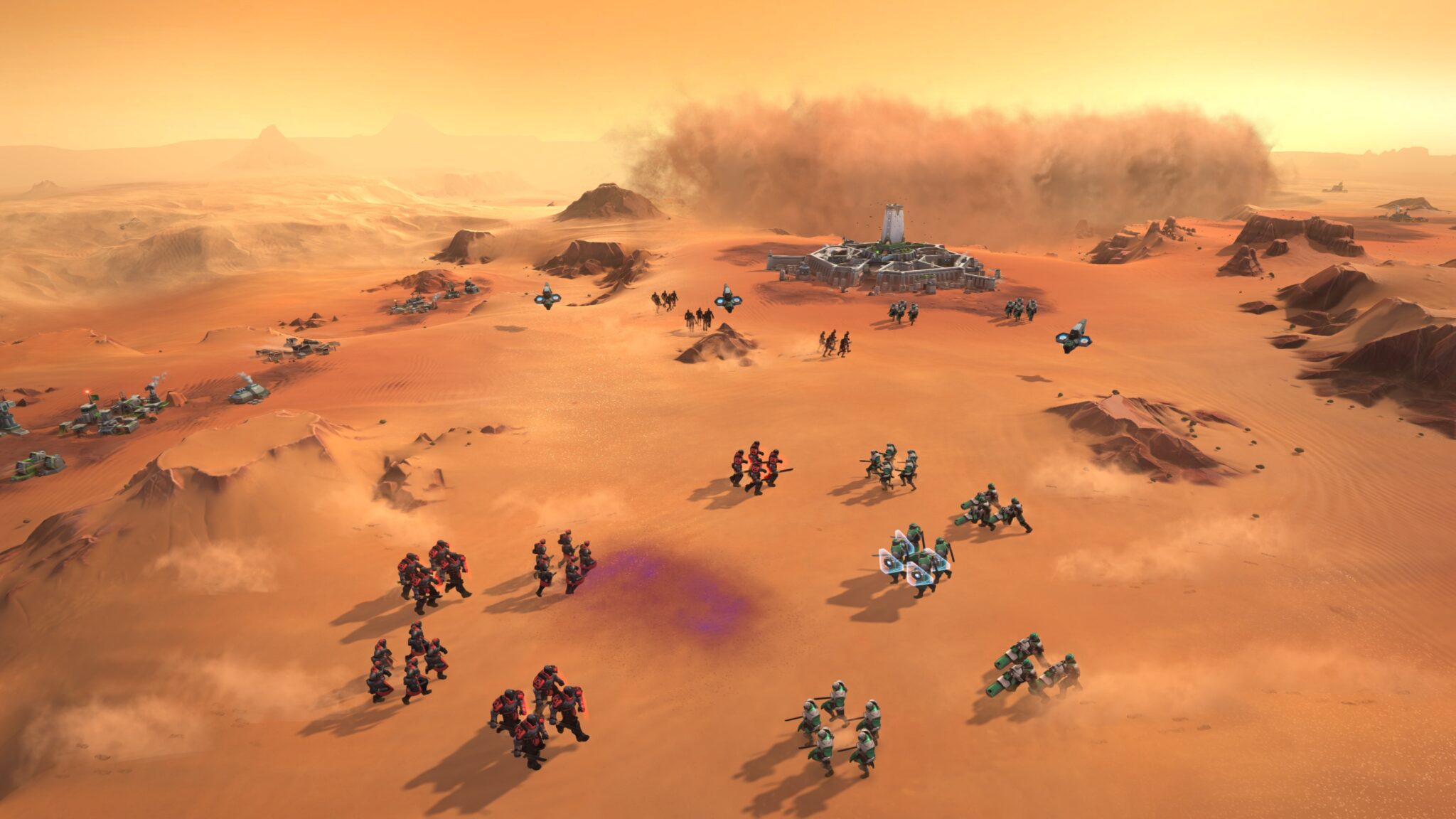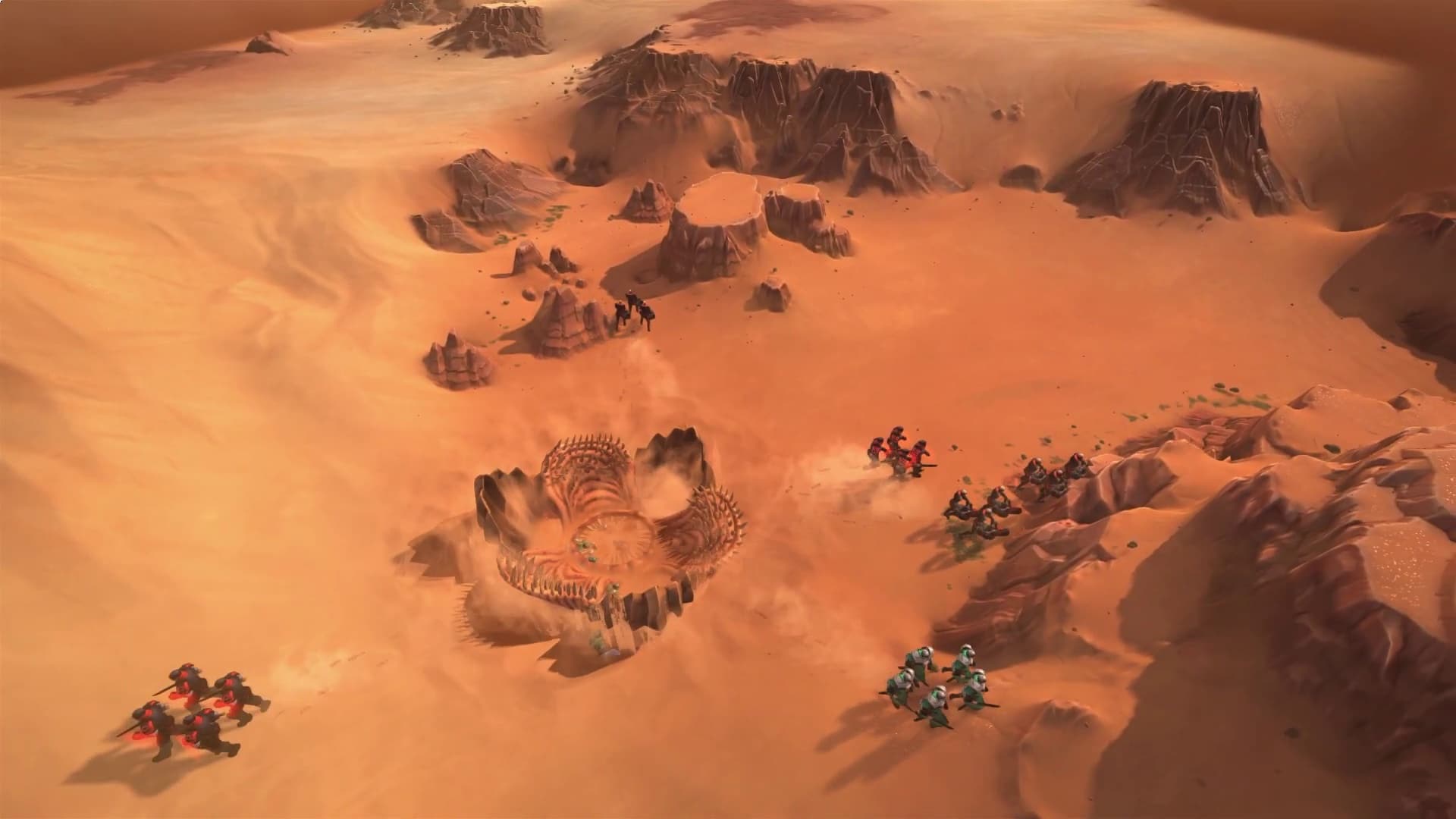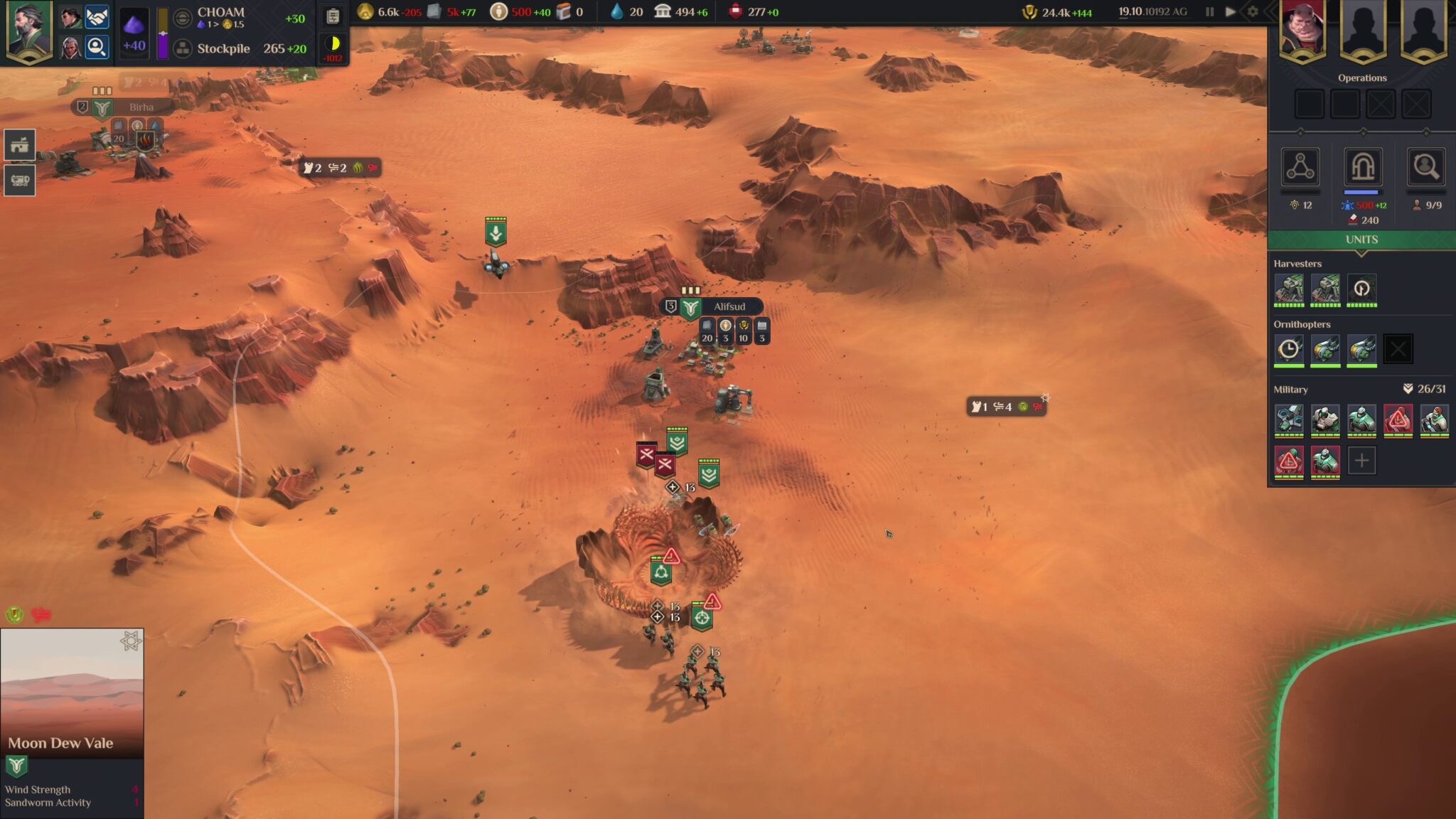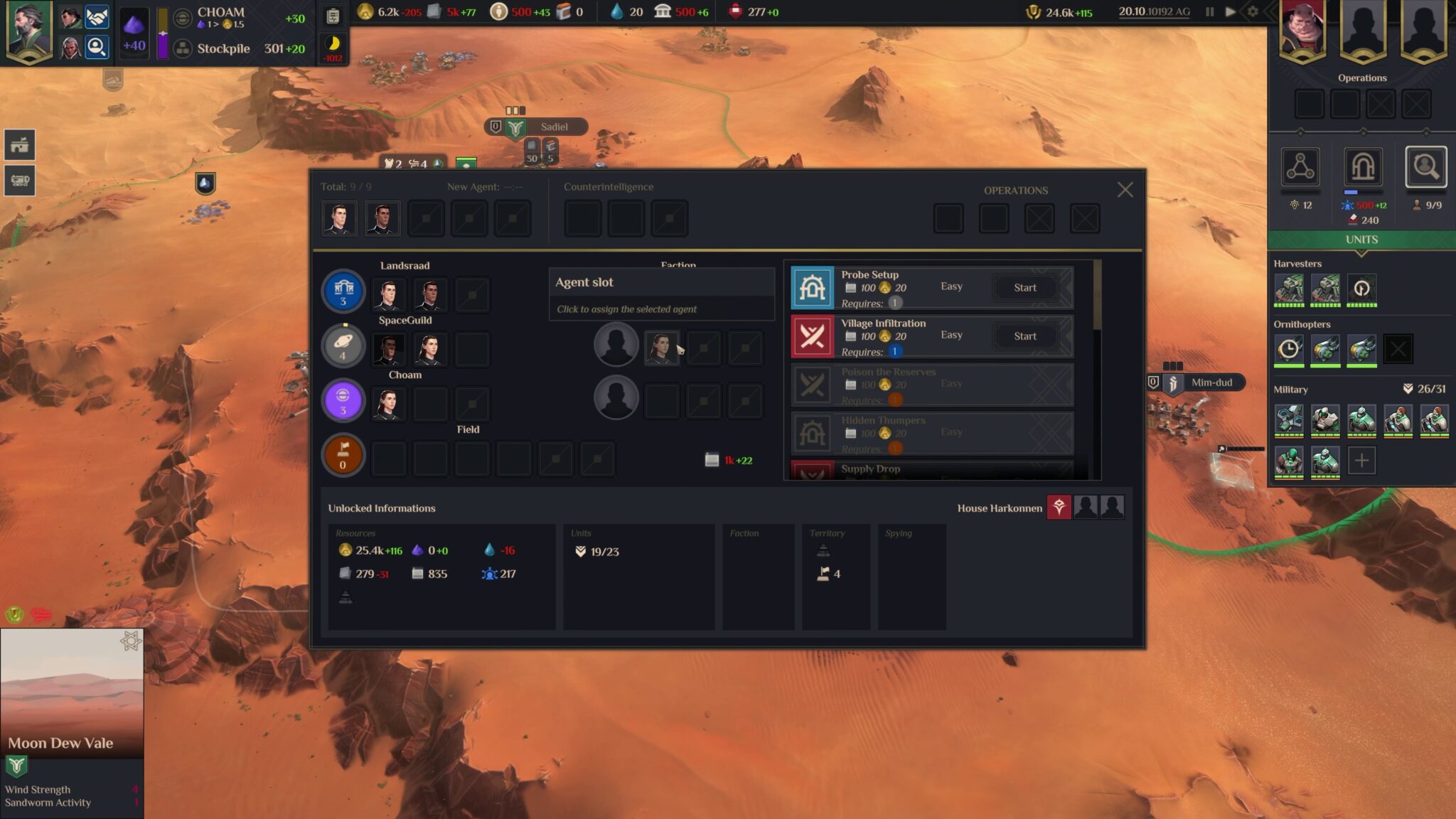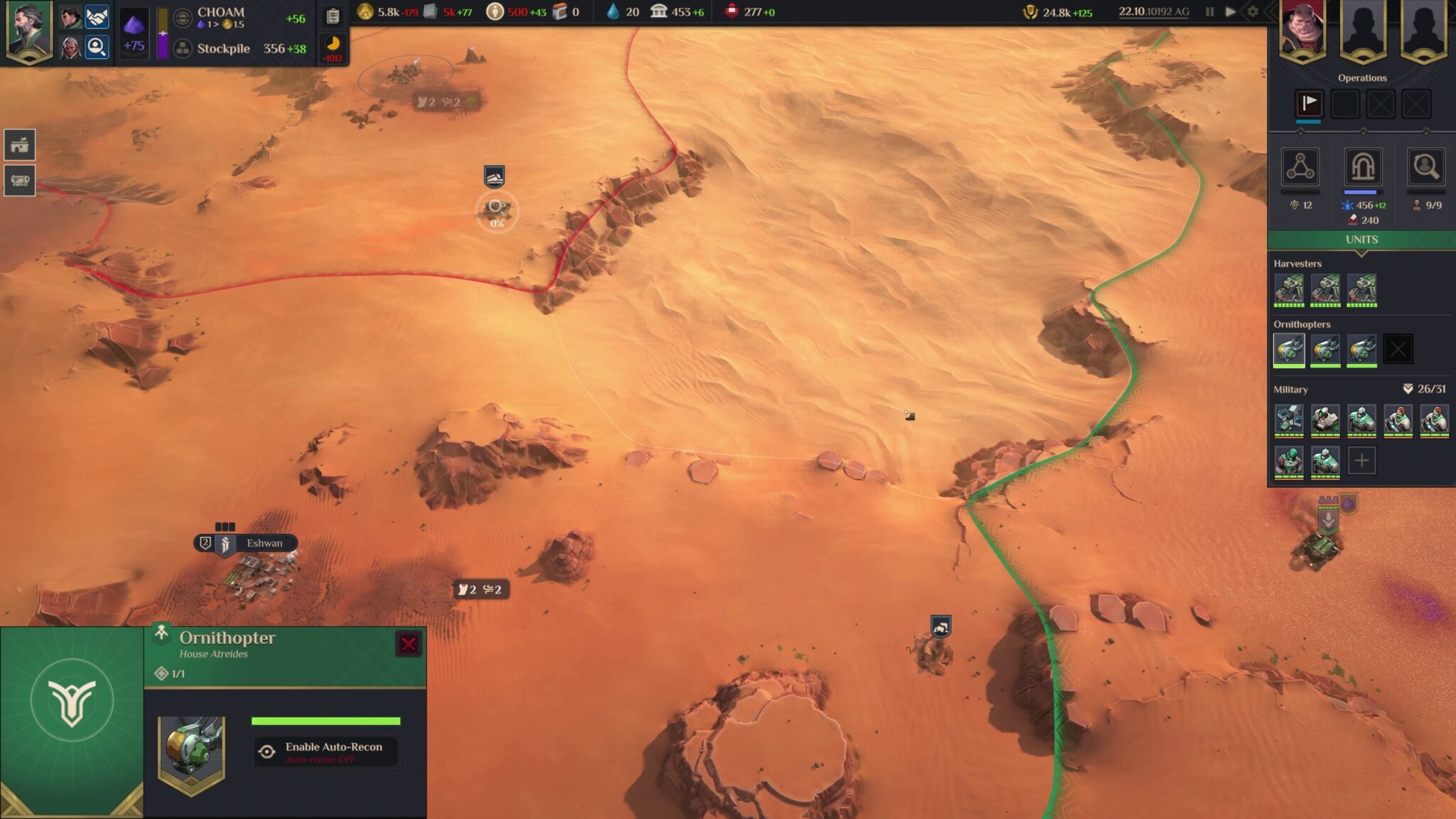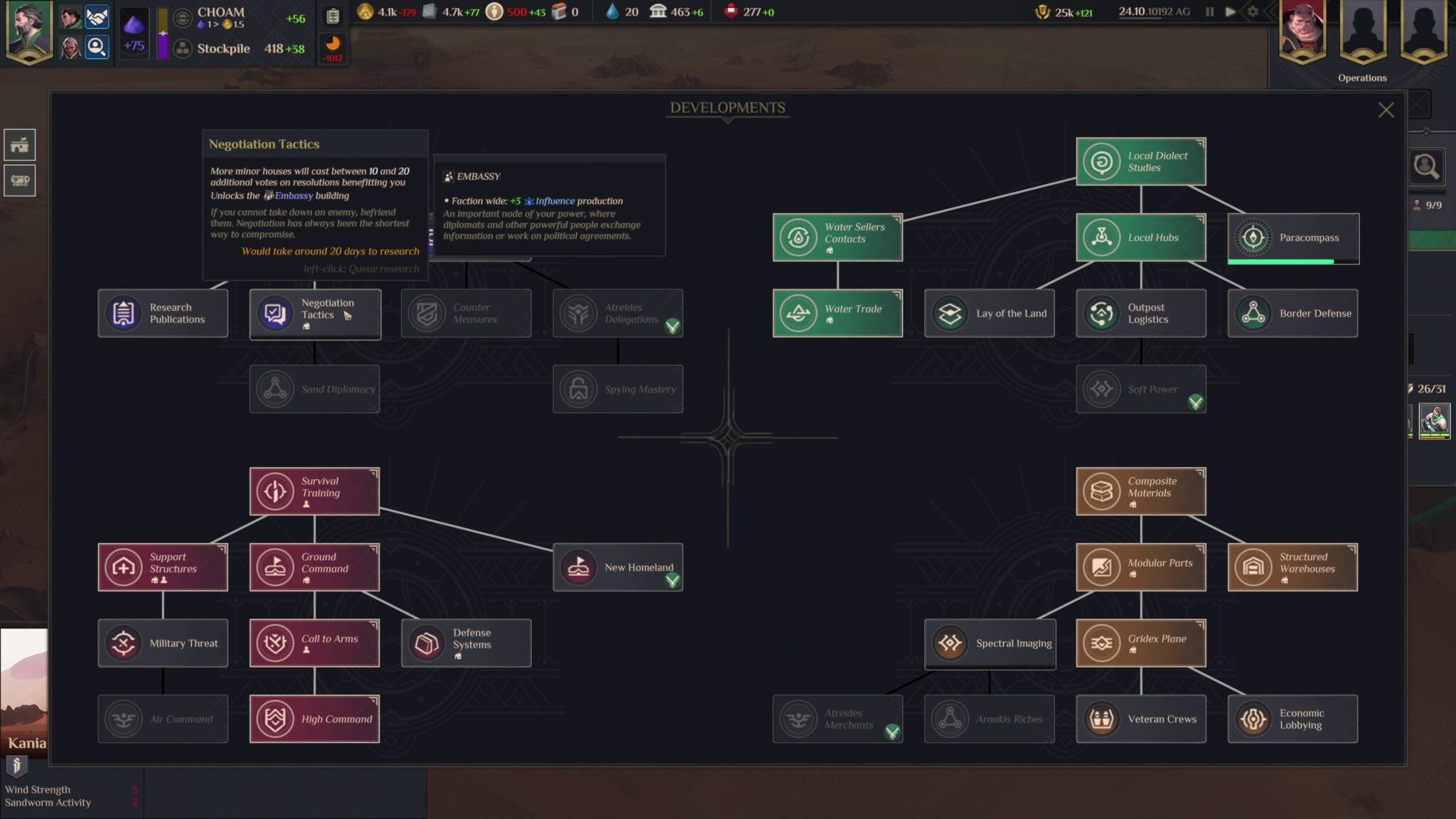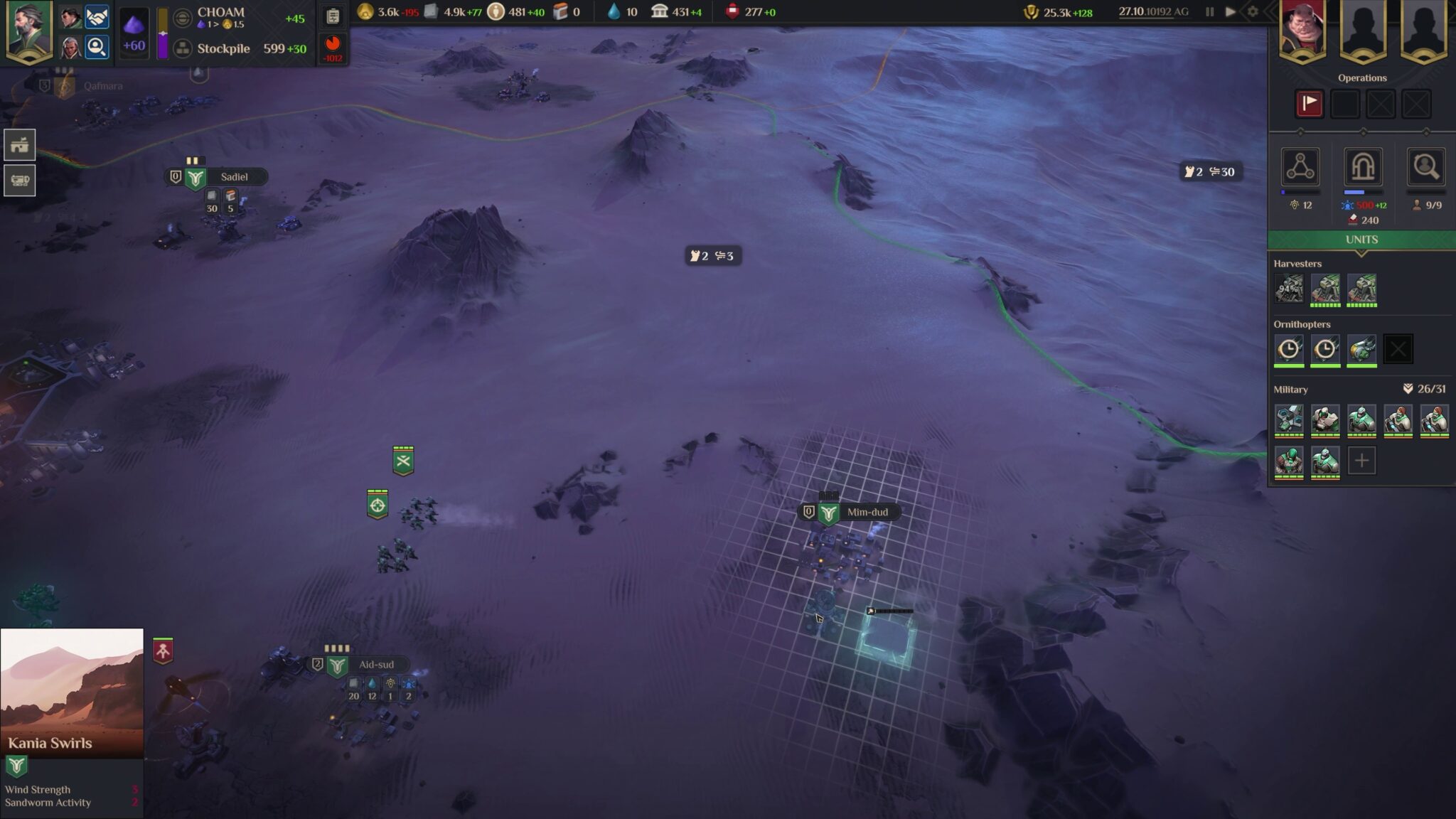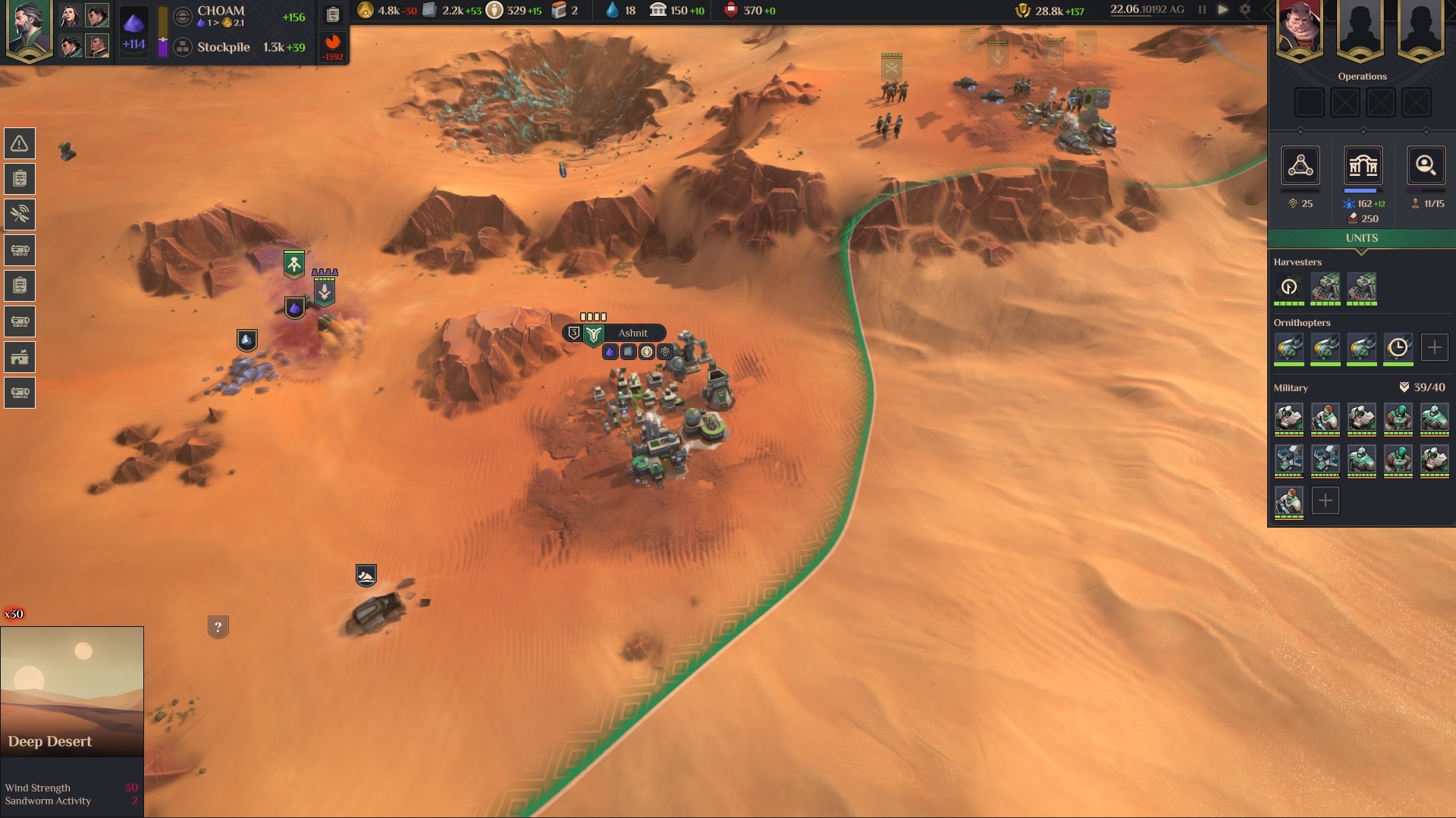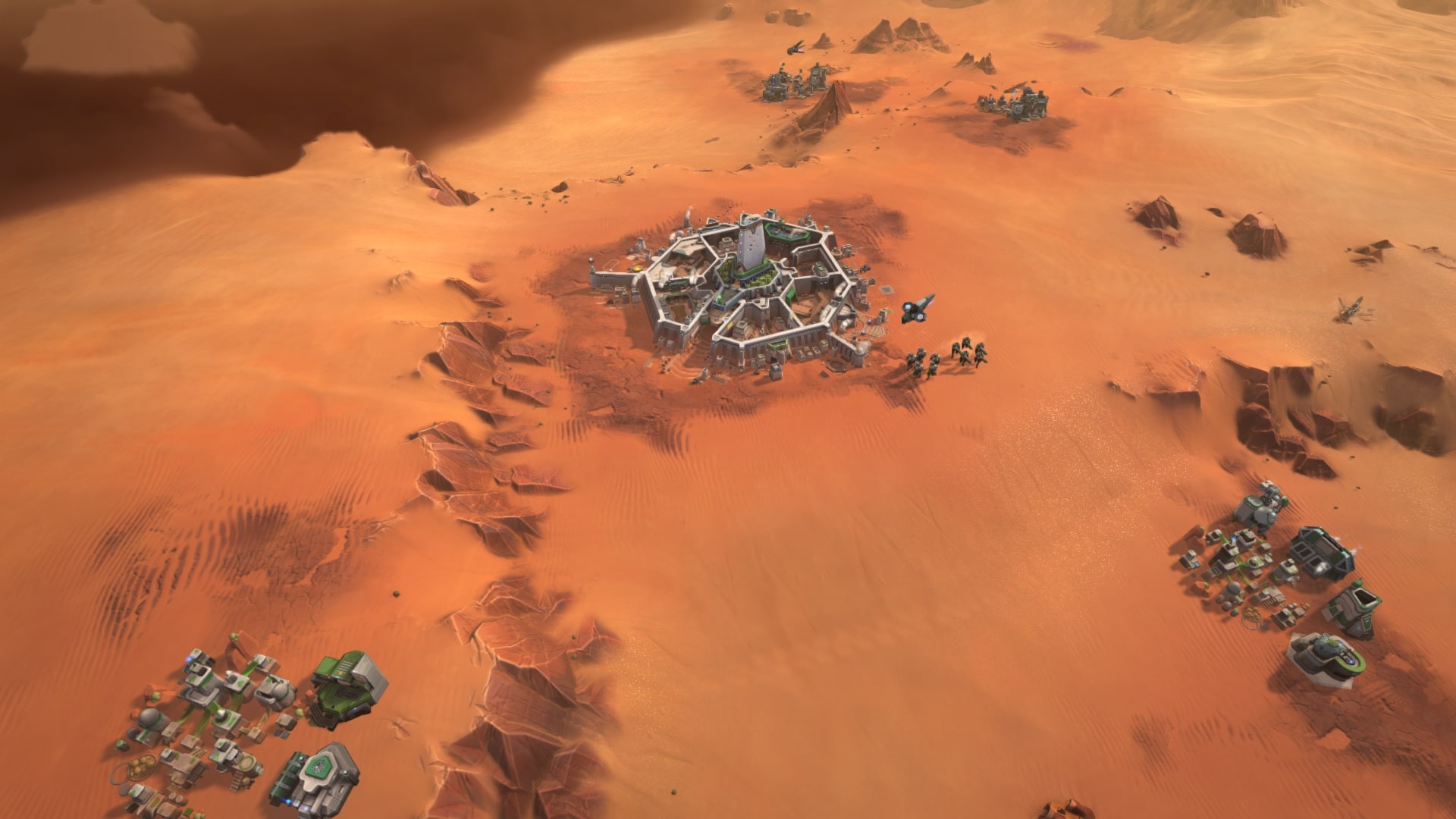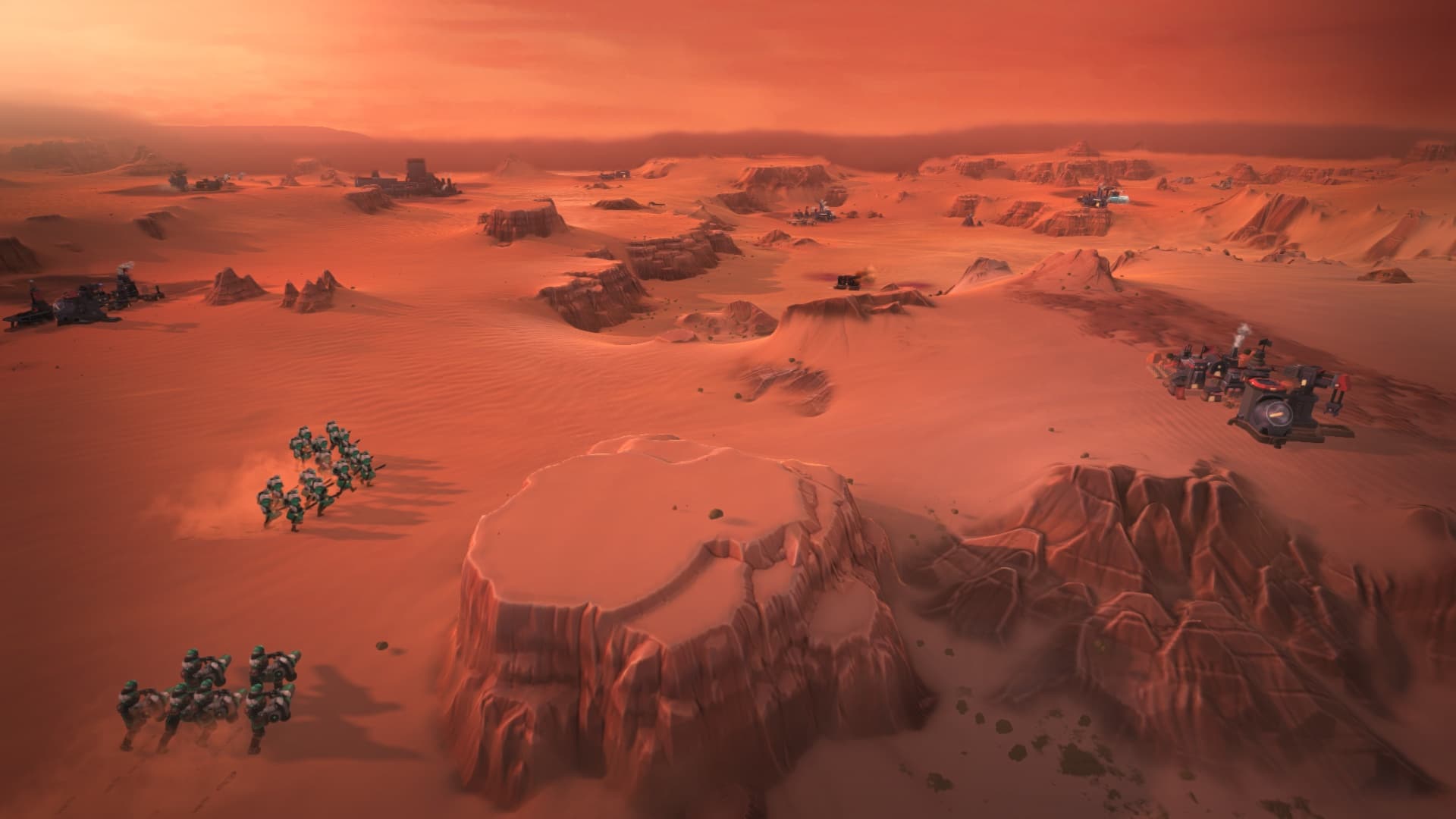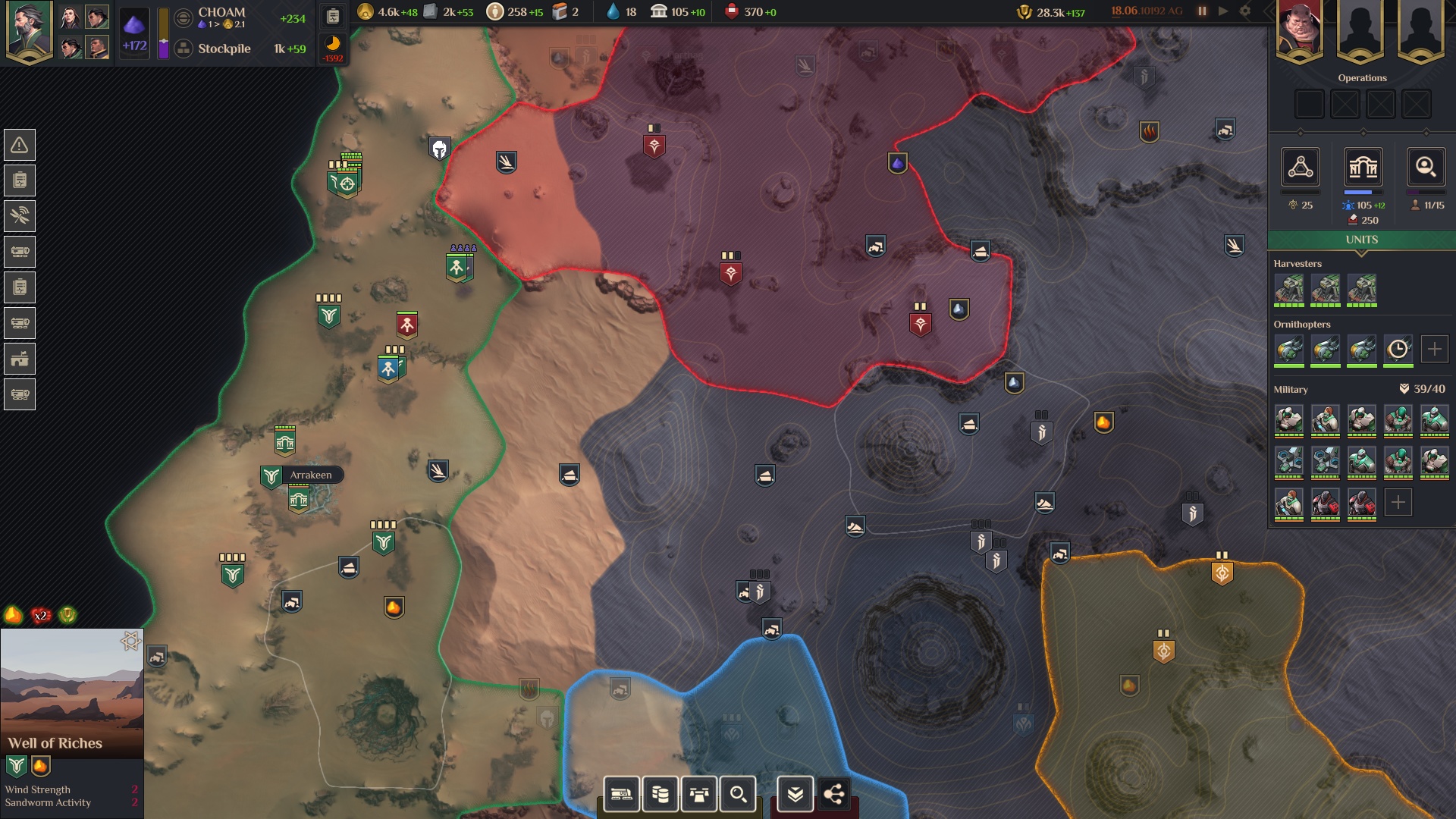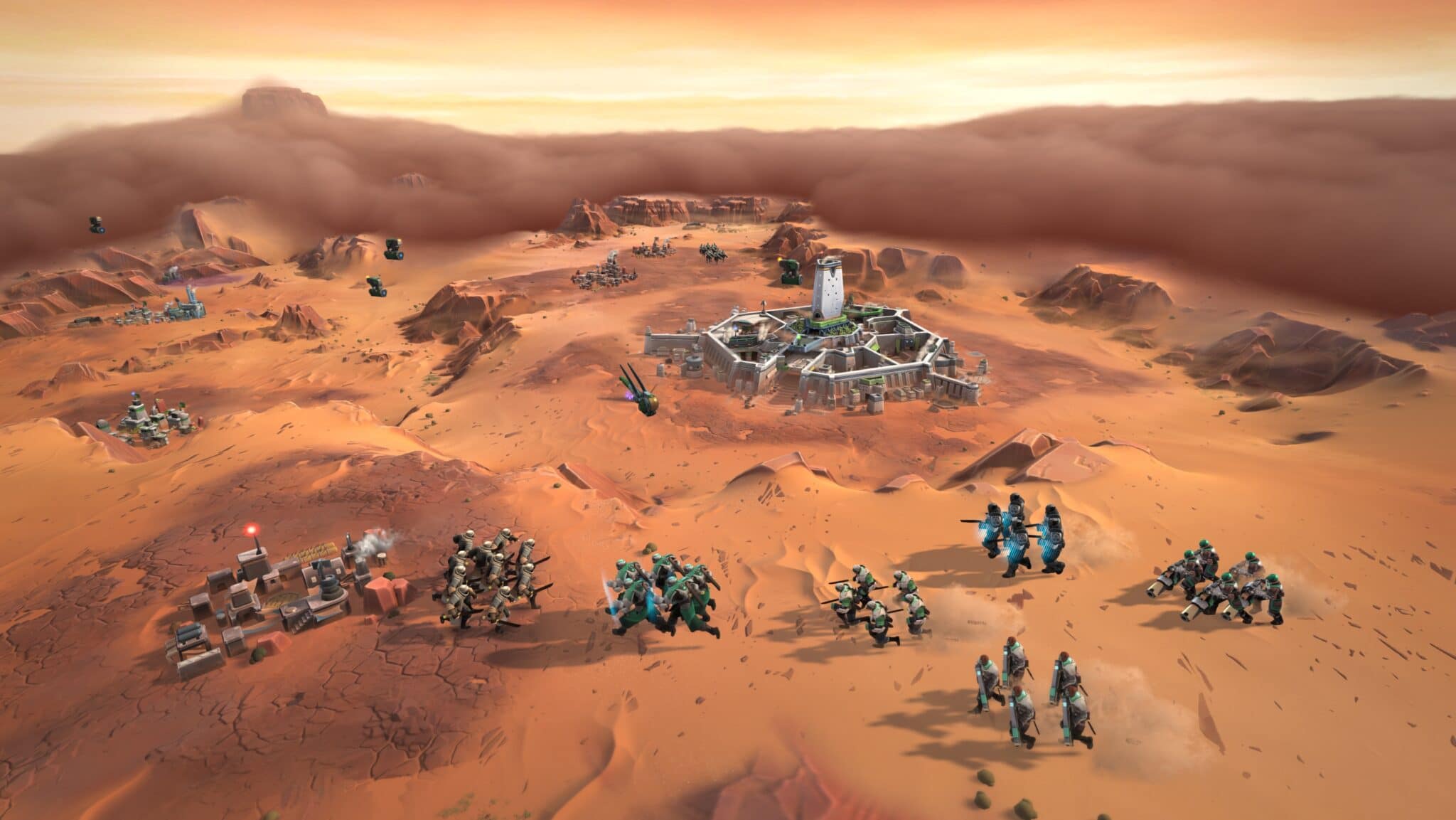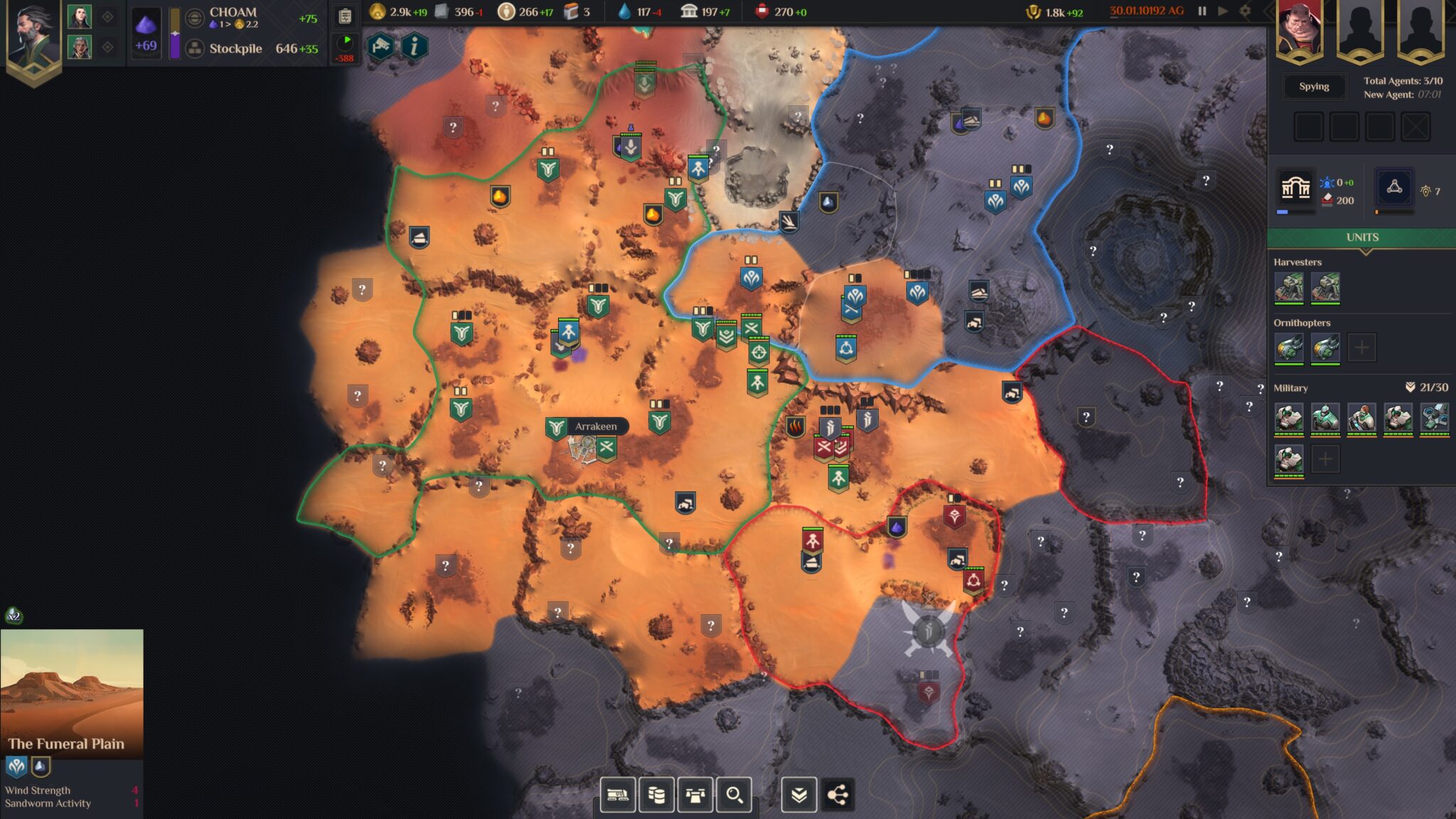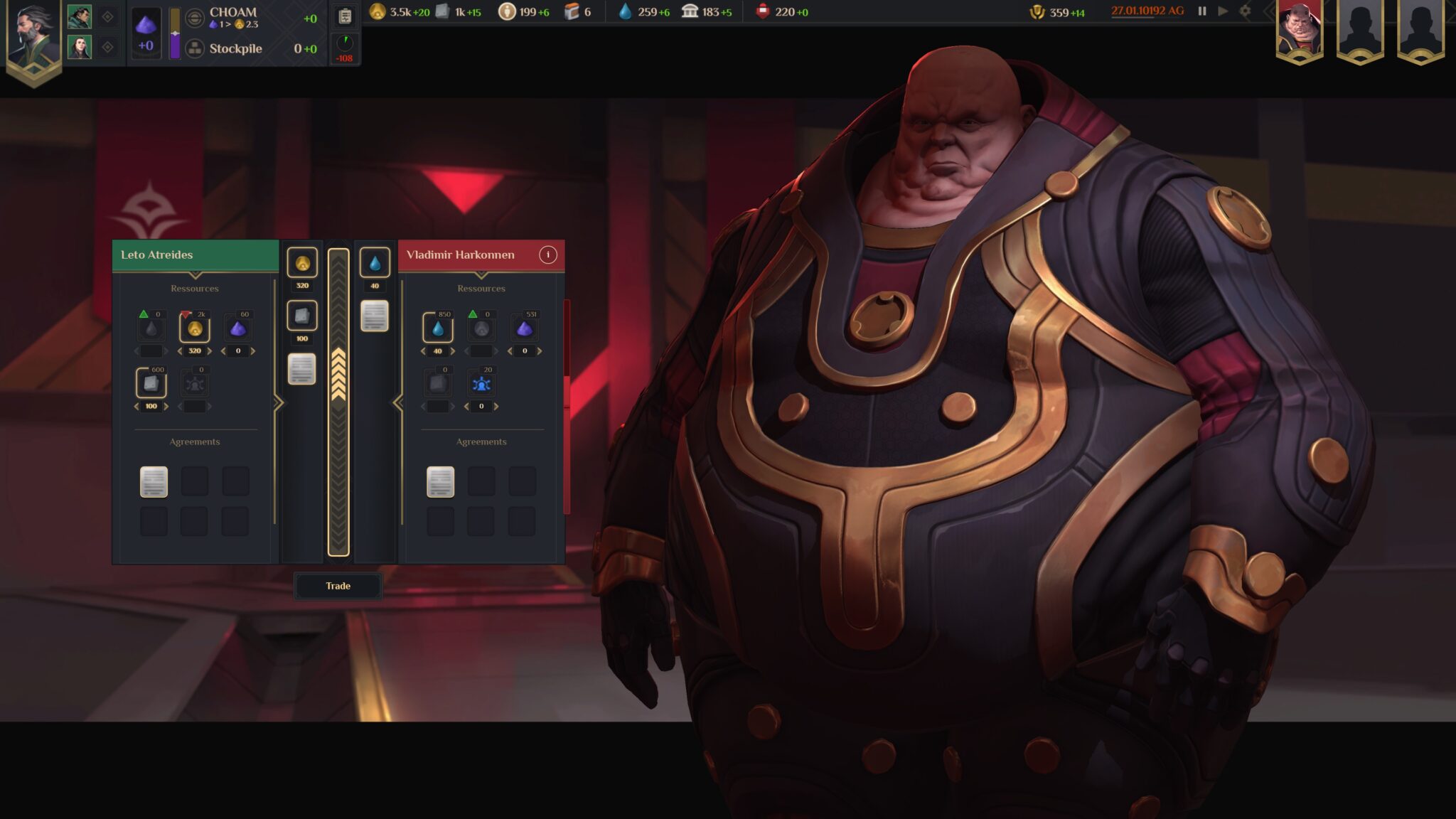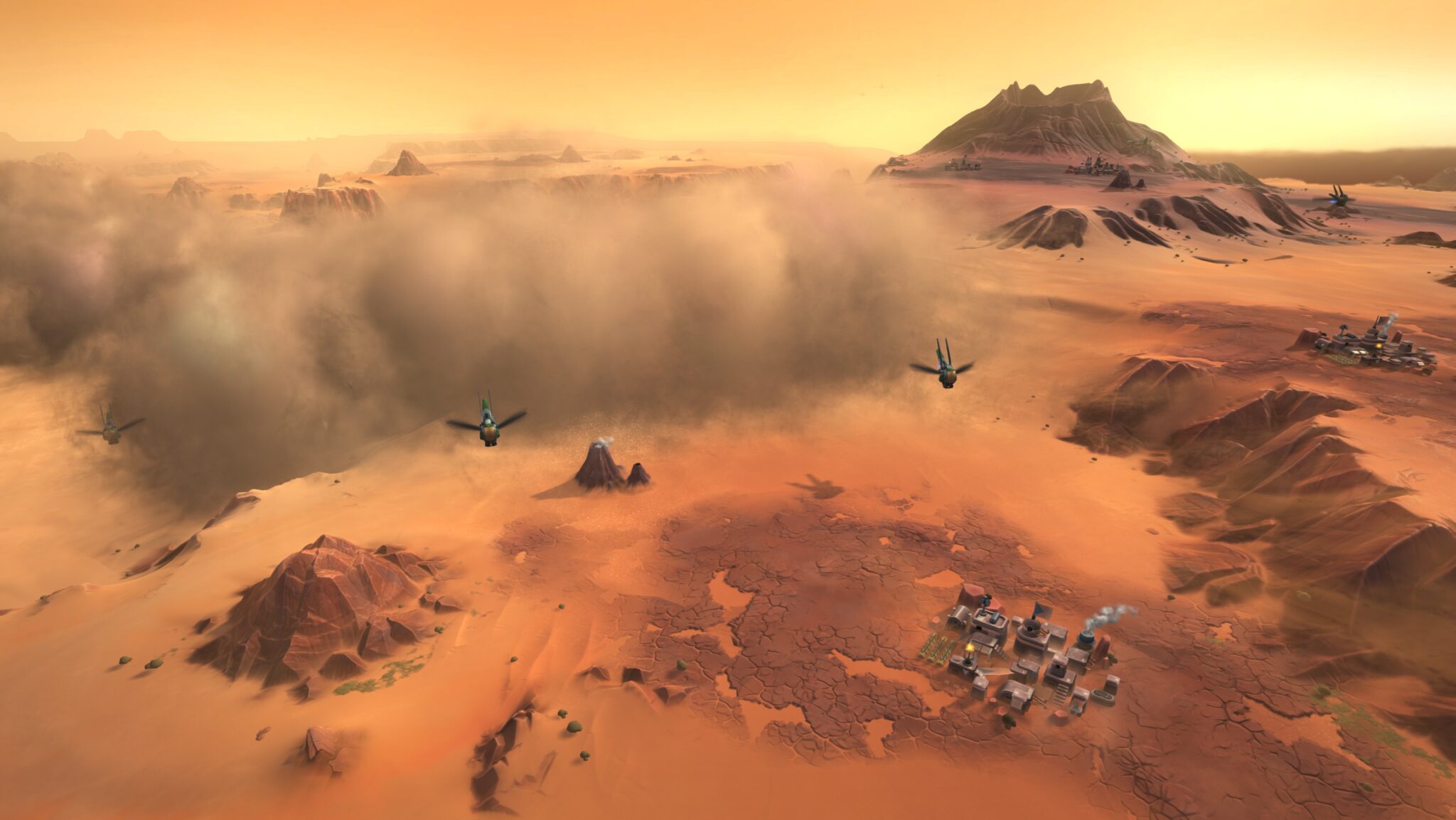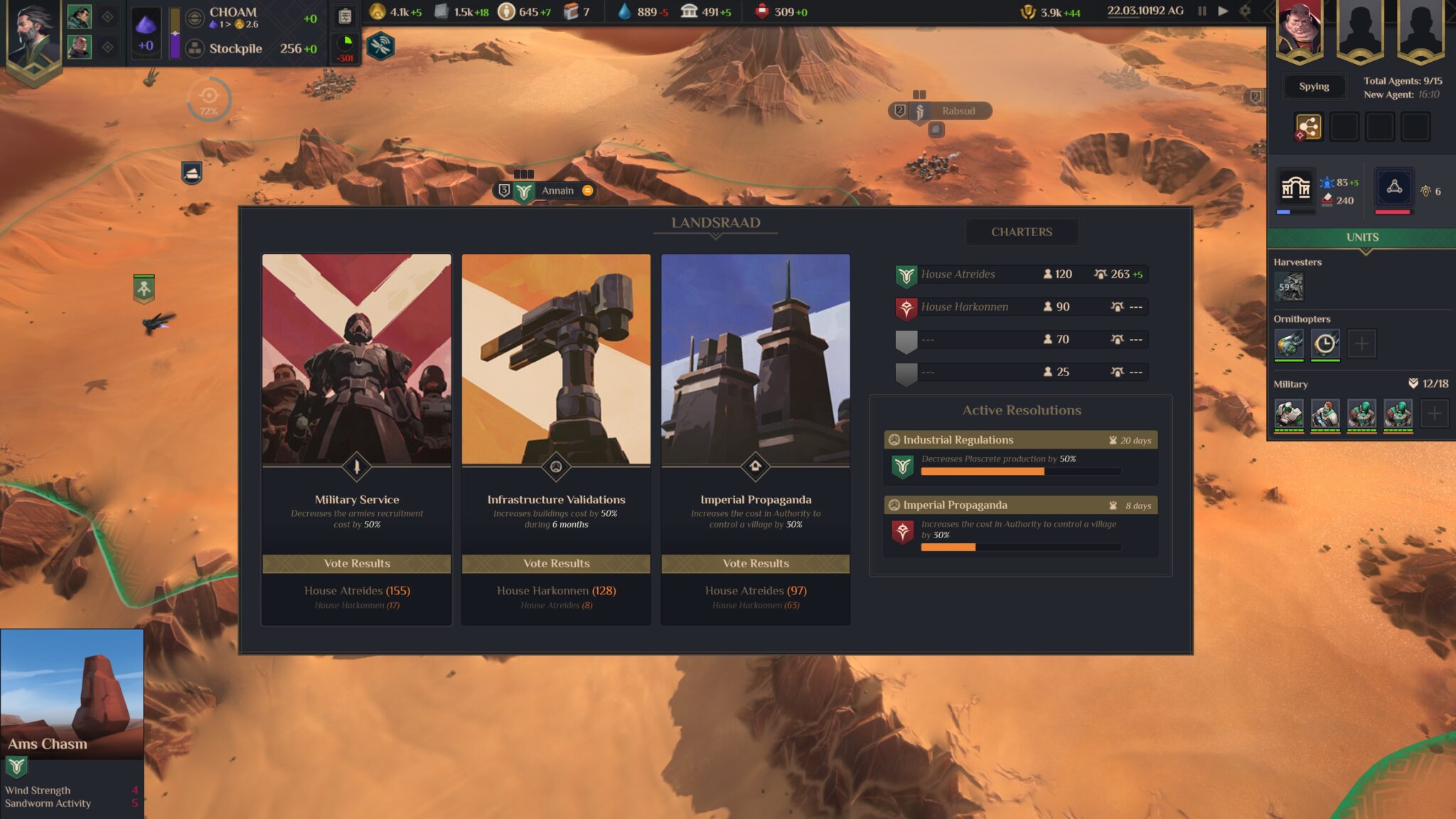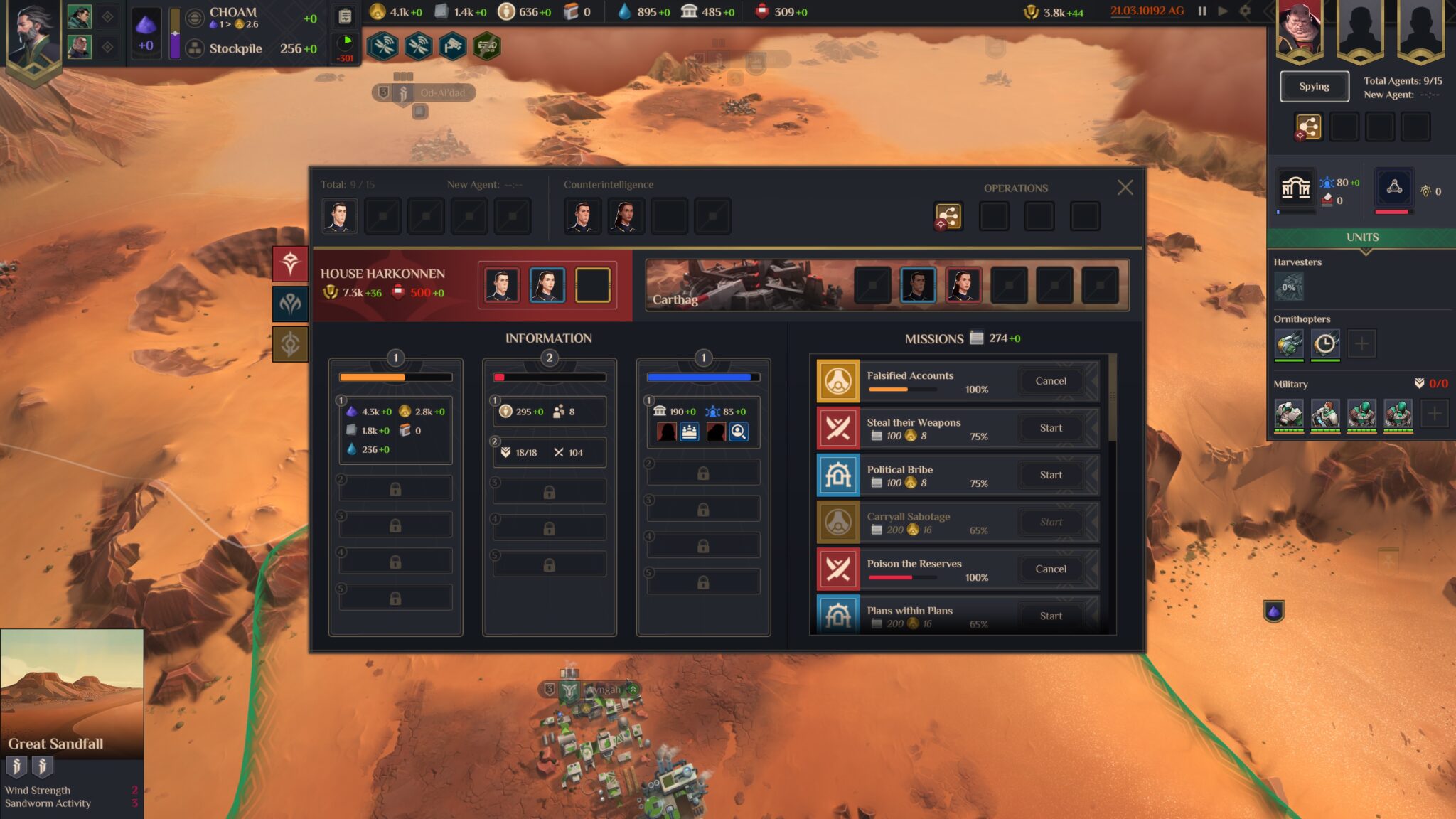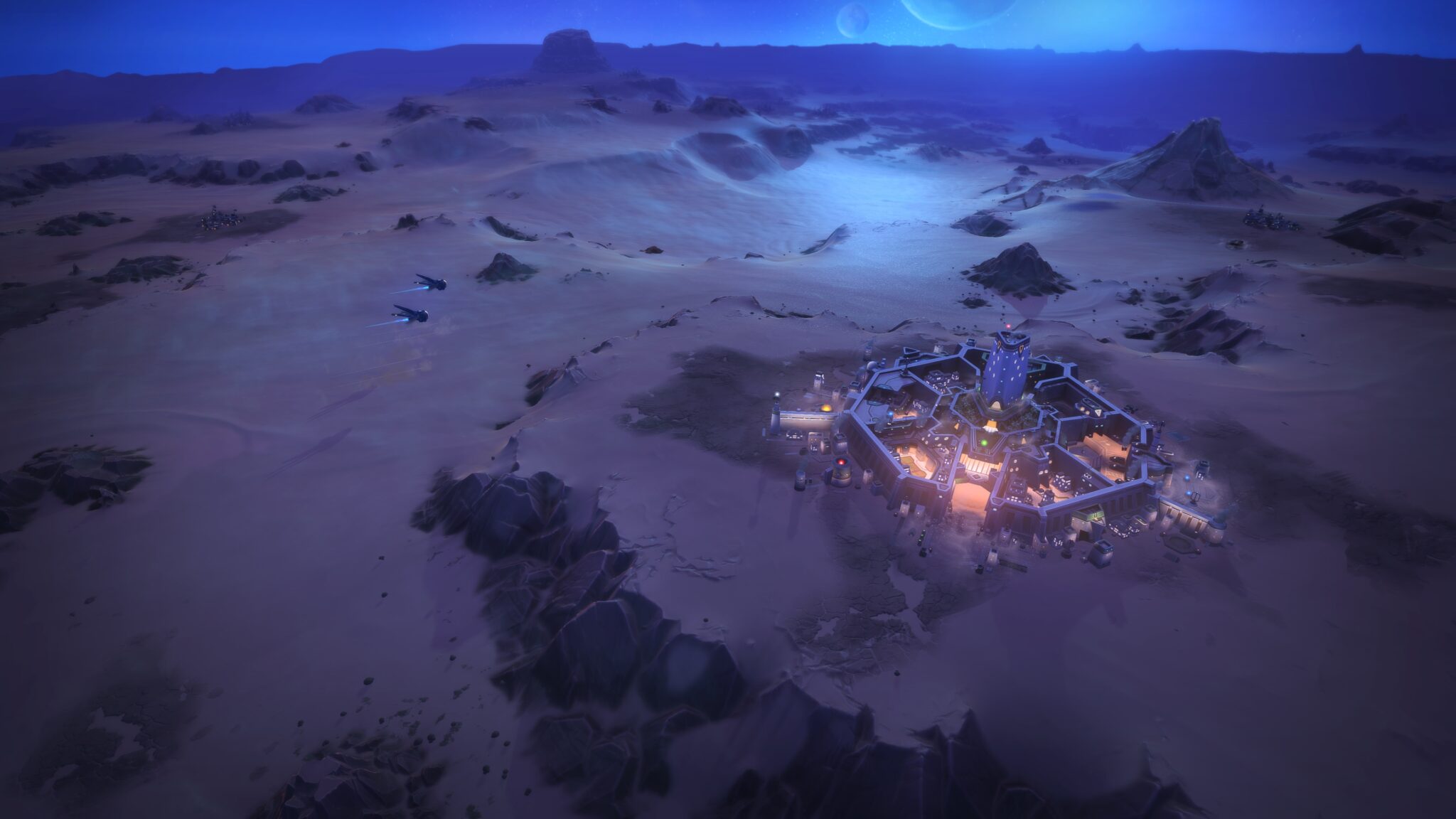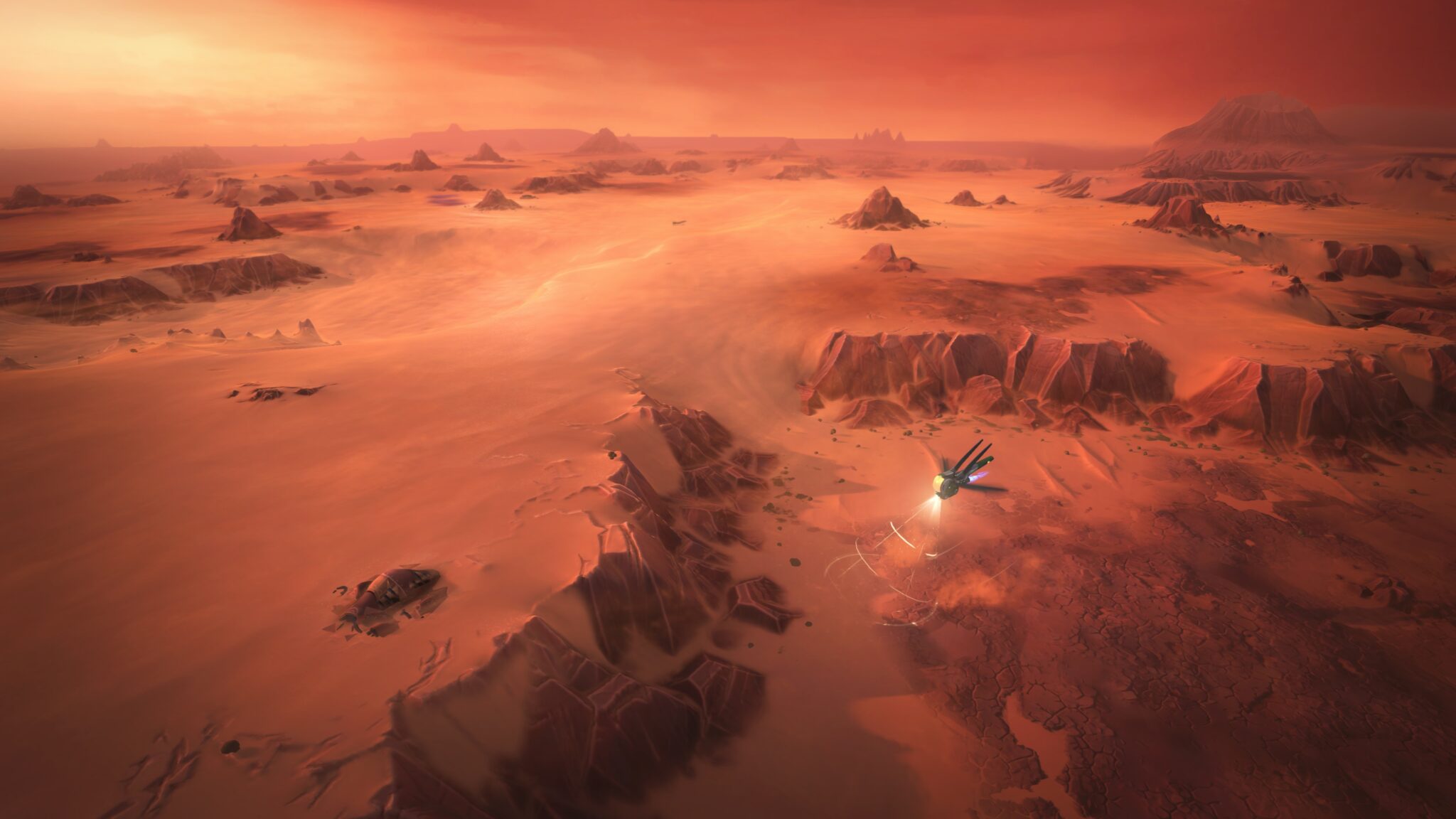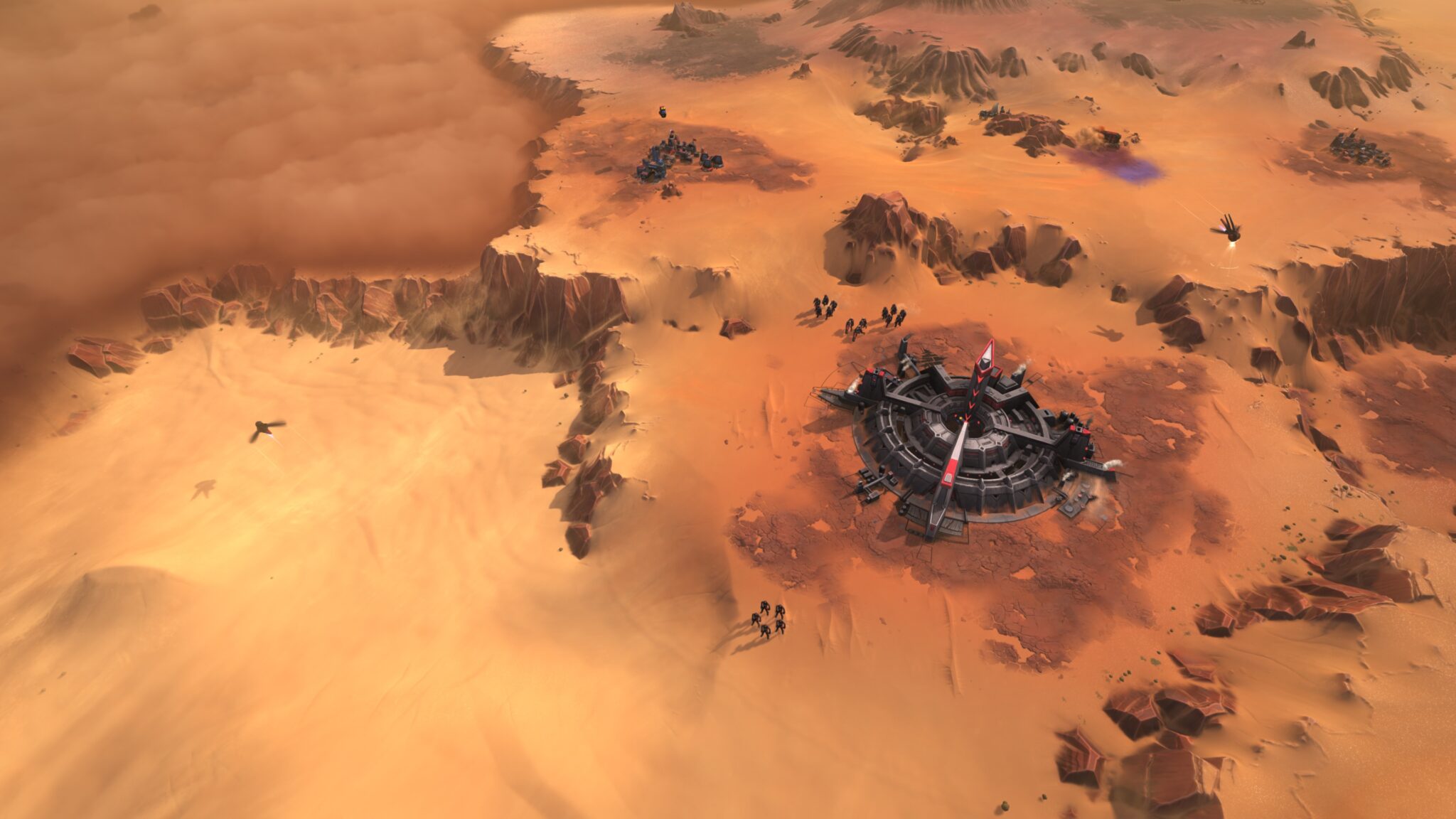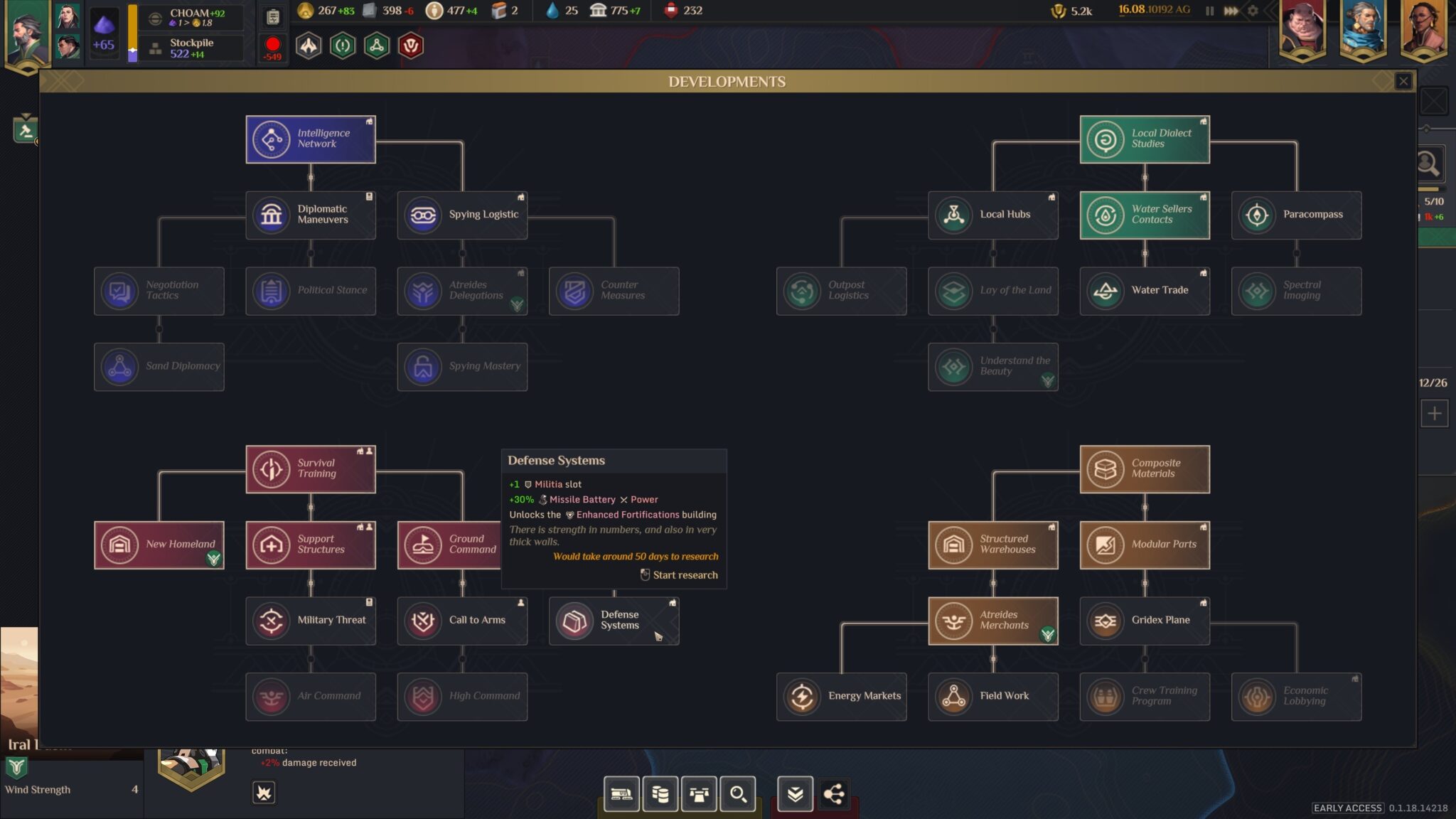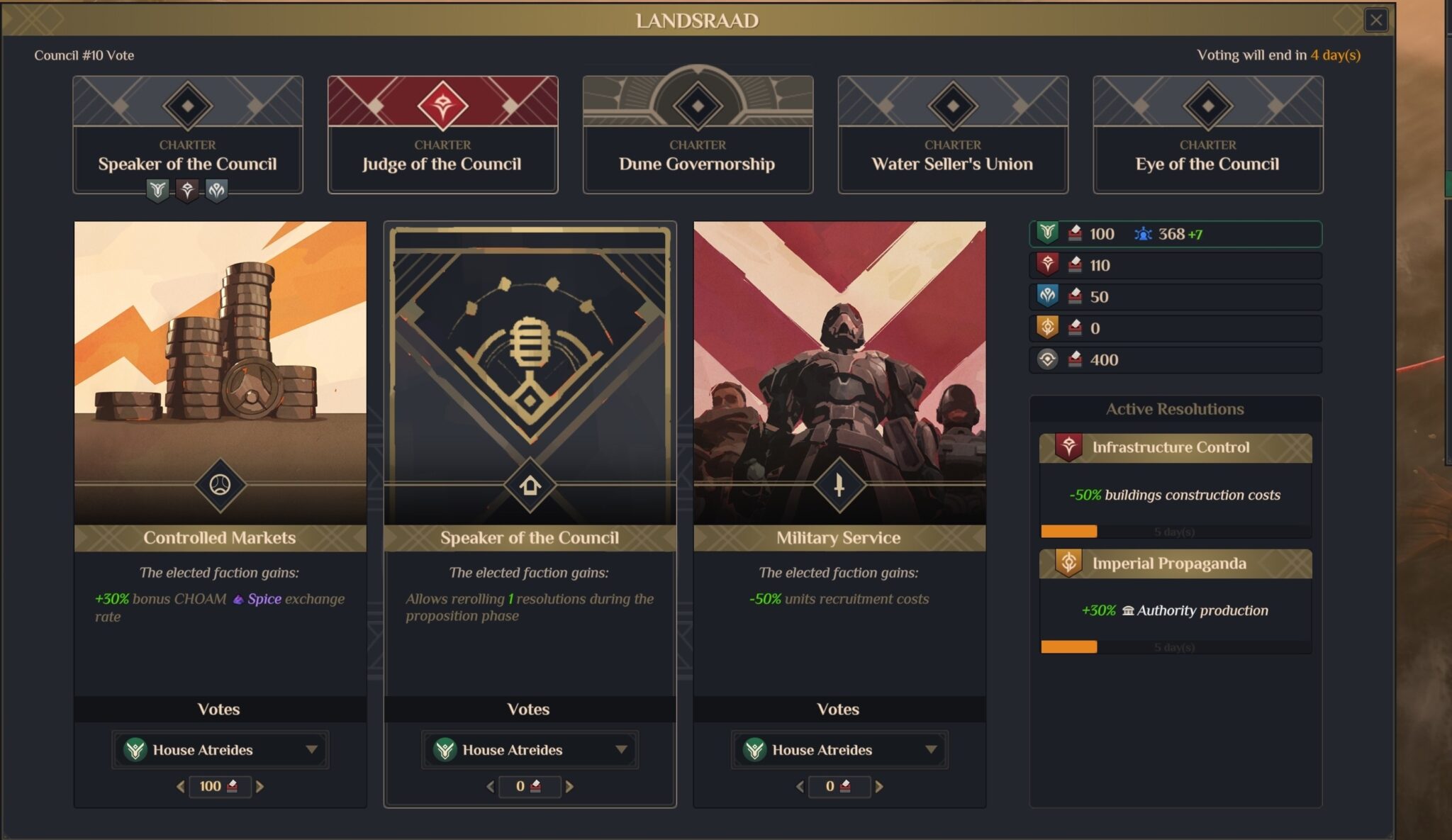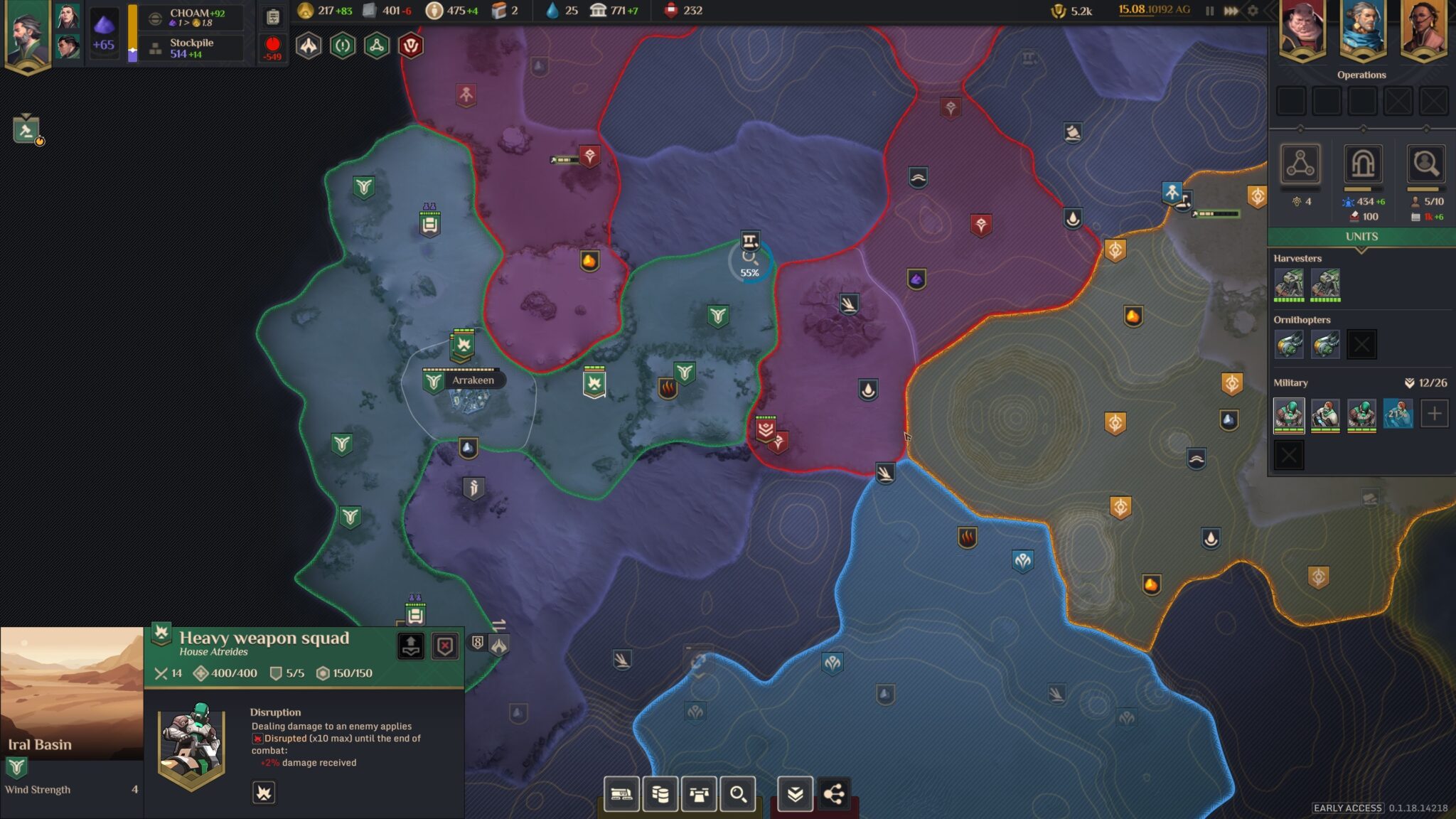Atreides versus Harkonnen versus Smugglers versus Fremen: They all fight in Spice Wars for the desert planet and its precious sandworm poop.
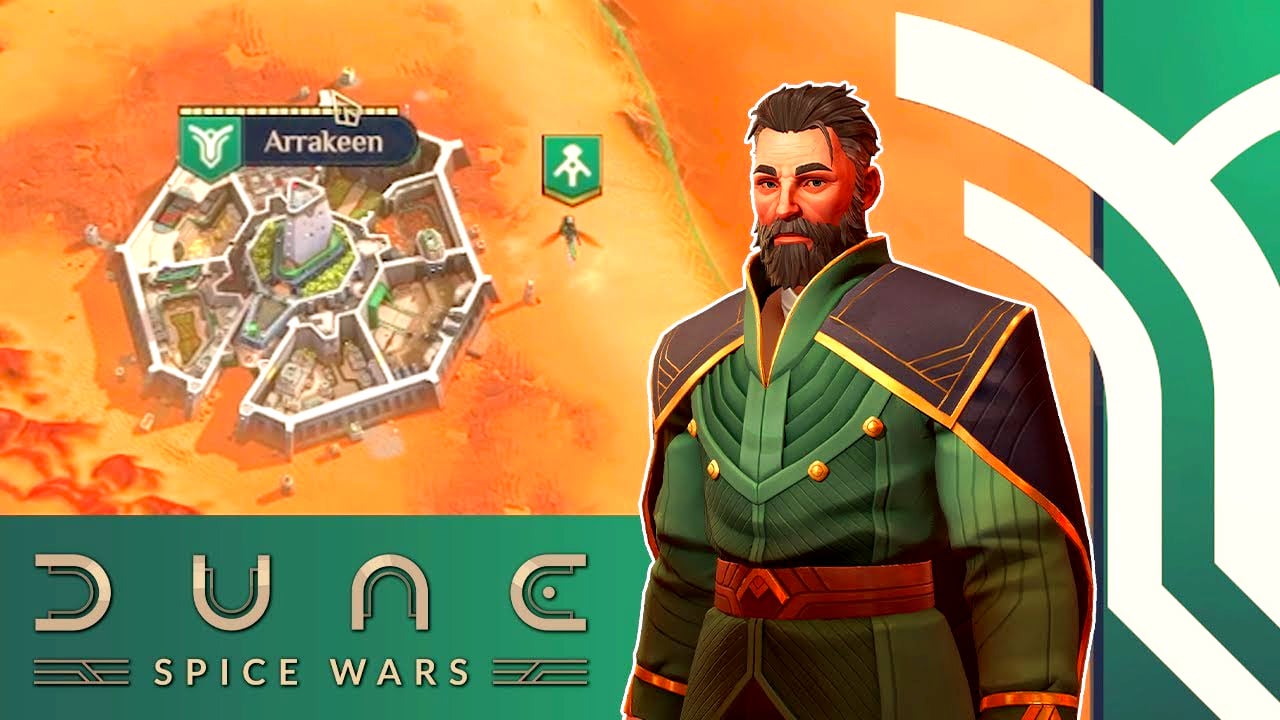
French fries without salt, tomato juice without pepper, sausage without curry – you can do it, it just tastes half as good. But in the distant future, nothing will work without seasoning: In the eleventh millennium, the so-called spice gives the navigators of the space guild clairvoyant abilities. Without Spice, interstellar space travel is doomed.
But the mind-altering drug is only produced on the desert planet Arrakis by giant sandworms, and the hostile world is correspondingly hotly contested. In Dune: Spice Wars you take over one of the factions on Arrakis. The strategy game will enter Early Access on 26 April – we have already combed the desert in detail.
In addition, there’s a guide for all early starters with tips that we would have liked to know before the start of the game:
Table of Contents
Like Dune 2, but very different
Dune and real-time strategy? Of course, one immediately thinks of the Westwood classic from 1992, because Dune 2 is considered the first real real-time strategy game (even if this honour actually belongs to Duke Two). But Dune: Spice Wars plays completely differently from Dune 2.
For Spice Wars is more of a real-time 4X game with the classic elements of exploration, expansion, exploitation and extermination. You start small and explore the sectors around your starting area with an iconic ornithopter, reminiscent of a helicopter and dragonfly, and uncover neutral villages, among other things.
You can annex these settlements to your faction. Either by force with your troops, by eliminating the defending militias, or with the special abilities of your faction. If you play House Atreides, for example, you can do this peacefully by using your influence. As the despotic Harkonnen, on the other hand, you rely on oppression. The struggle for the settlements and their sectors, their resources and strategic positions is really motivating and exciting even in Early Access!
Happs!
At the moment there’s only a, hello, sandbox mode with random maps in three sizes and four AI difficulty levels. For a medium map with normal AI strength, you can calculate two to four hours of play time.
The most important resource is, of course, spice. You have to regularly deliver an ever-increasing amount to the empire, and at the same time the spice serves as a means of exchange for the currency solaris. Huge harvesters extract the valuable spice, and when one of these harvesters is full, a carryall transporter flies it to the refinery and back again.
However, Spice Wars also contains the sandworm: The enormous creatures are attracted by rhythmic noises and devour harvesters or several combat units in one bite. Fortunately, the harvesters can be switched to automatic evacuation, and then a carryall will get them out of the danger zone in time.
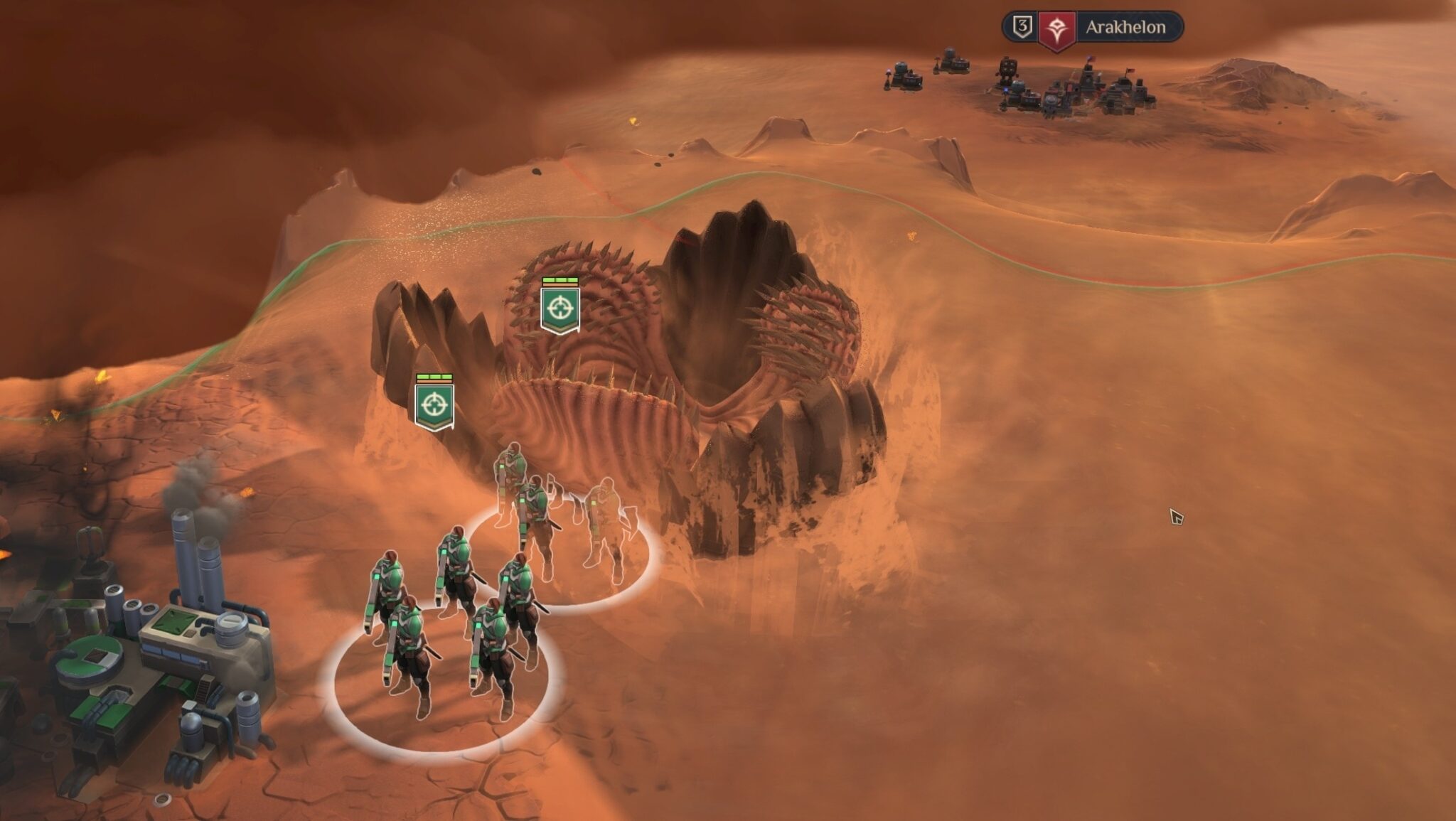
But Spice and Solaris are not the only resources. You have to keep an eye on several raw materials, for example water, which is essential for survival and which you obtain through evaporation in wind turbines. And even sectors that don’t contain any raw materials but are damn windy are in great demand. You need the water to supply your settlements and troops. If you run out of water, your villages will rebel!
Building shortage
Basically, each settlement has only two slots for buildings, each additional building slot costs valuable plastic steel. However, because many sectors have a certain raw material deposit such as energy sources, minerals or spice, the first building slot can be used for an energy cell factory or spice refinery.
It is better to secure front sectors with rocket launchers or to build eavesdropping facilities in the direction of the enemy. This sector specialisation makes the run on valuable areas even more exciting; in our test games, some settlements changed hands several times.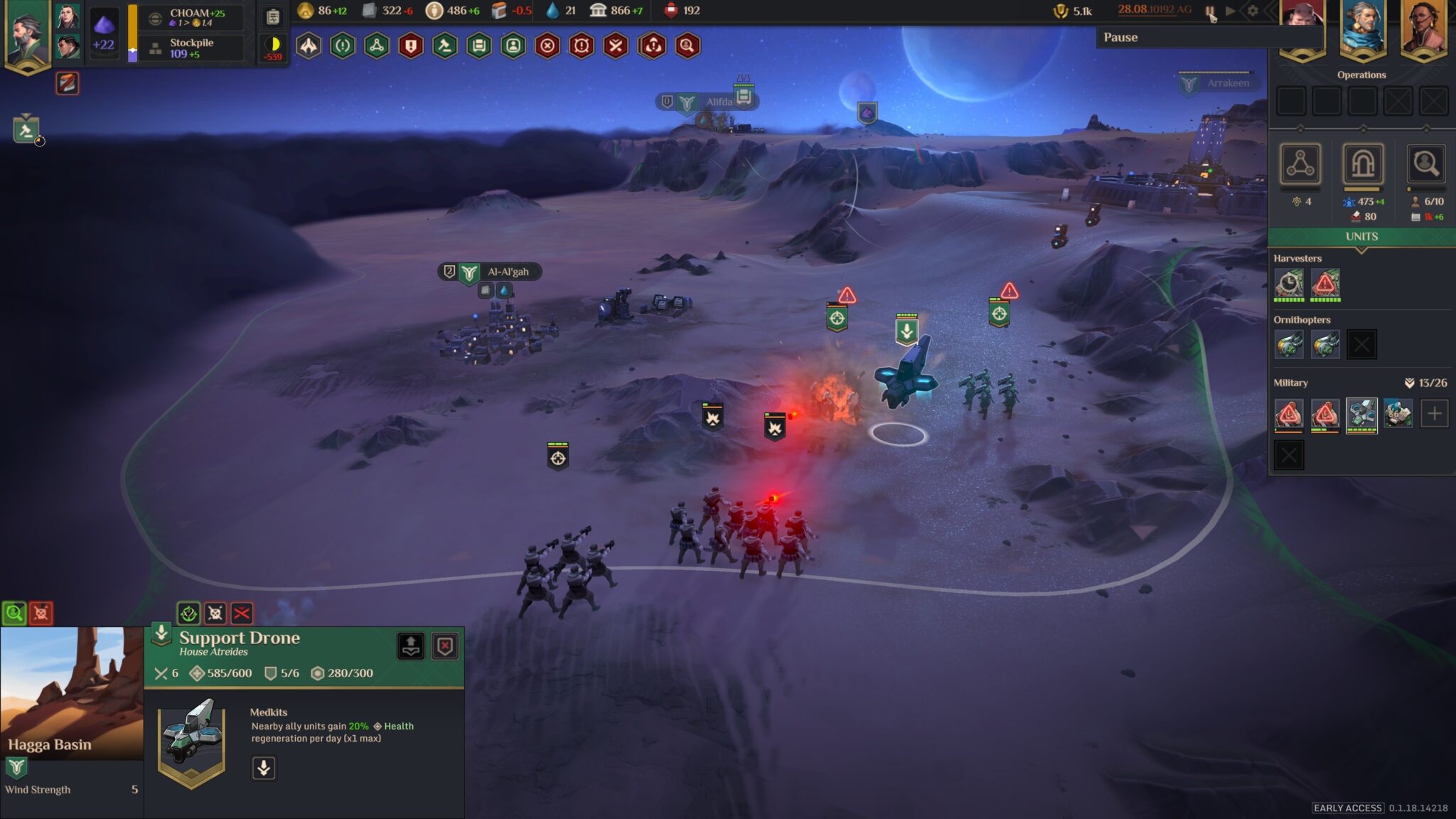
Unlike in the Westwood classic Dune 2, we fight almost exclusively with infantry for settlements and the factions’ headquarters. Basically, each faction has only a handful of troop types: light close combatants, riflemen, heavy infantry and special units. For example, the flying support drone of the Atreides, which attacks ground targets and heals its own ground troops. At the moment, the battles are exciting, but visually still unspectacular, because the units fight only sparsely animated and move very stiffly on the hip.
From quartet to quintet
Four factions are currently available to play in Early Access of Dune: Spice Wars. The honourable House Atreides relies heavily on cooperation, especially with the indigenous Fremen. As an Atreides player, you can also find the hidden Fremen settlements (Sietches) more easily. For the despotic Harkonnen, power and bank balance are what count. The smugglers, on the other hand, can build secret hideouts in enemy villages and equip them with troops.
Finally, the Fremen are at home in the desert, use fewer resources here and deploy smaller harvesting troops instead of gigantic harvesters. The desert dwellers also have ornithopters for reconnaissance, but instead of flying transporters they use sand worms as a means of transport: to do this, an infantry squad sticks a so-called thumper into the sandy soil, which attracts the next worm by rhythmic tapping, and with another click you determine the target area.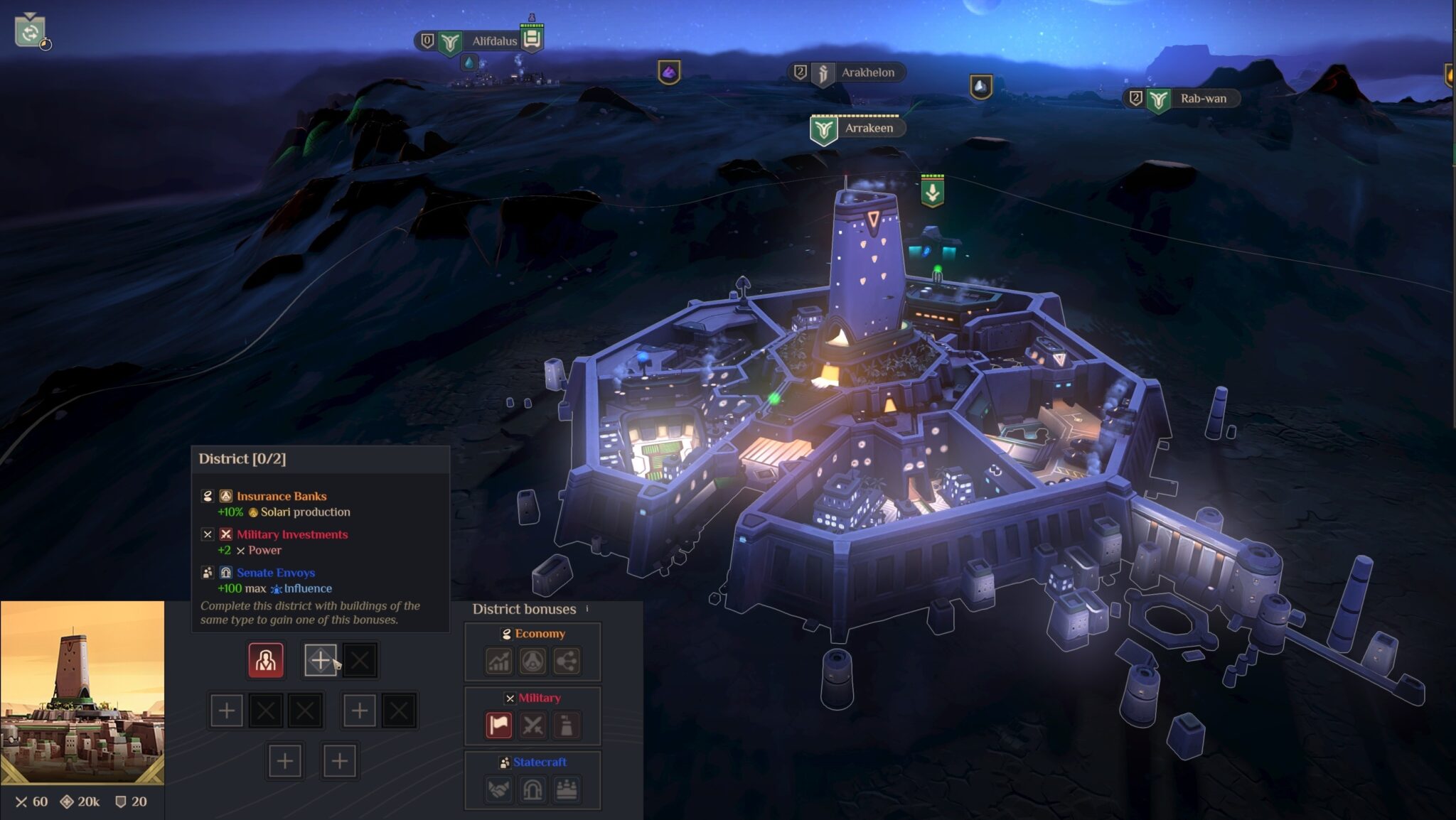
The animal underground is still unspectacular to look at, but we have experienced several times how Fremen appear out of nowhere from the sandy desert. By the way, a fifth faction will be added by the time of the release at the latest.
A new faction will be added at the latest.On screen!
You also spend a lot of game time in various screens beyond the desert world and take care of votes, research, diplomacy and your agents. For example, the Landsraad, the UNO of the Dune universe, meets at regular intervals.
You then vote with the other factions on automatically generated topics. For example, on the selling price of spice, water production or the recruitment costs of fresh troops. This is presented in a rather sober way, but it has a noticeable effect – here you can deliberately poke fun at other factions or at least gain advantages until the next vote.
Diplomacy is simple, at least for now, and here we mainly used direct trade with other factions to fill our resource gaps. You can also enter into treaties such as open borders, joint research or a trade alliance. However, detailed actions like a sector or research swap are not included.
Licence to research
Talking about research: The research system is more extensive. There are four areas: politics, the military, economics and a mixture of folklore and natural history. Only a fraction of the research fields unlock new buildings like spice silos or units like the support drones. Through research, however, you can improve your chances of sabotage or infantry combat power in domestic sectors, for example. That’s easily enough to further develop your play style.
For example, we infiltrate agents into the other three factions, into the trade organisation CHOAM or, for example, into Landsraad, the political alliance of the great houses. Agents can also cripple enemy defences or sabotage enemy equipment – though even such clandestine operations only take place in dry text screens, not on the world map.
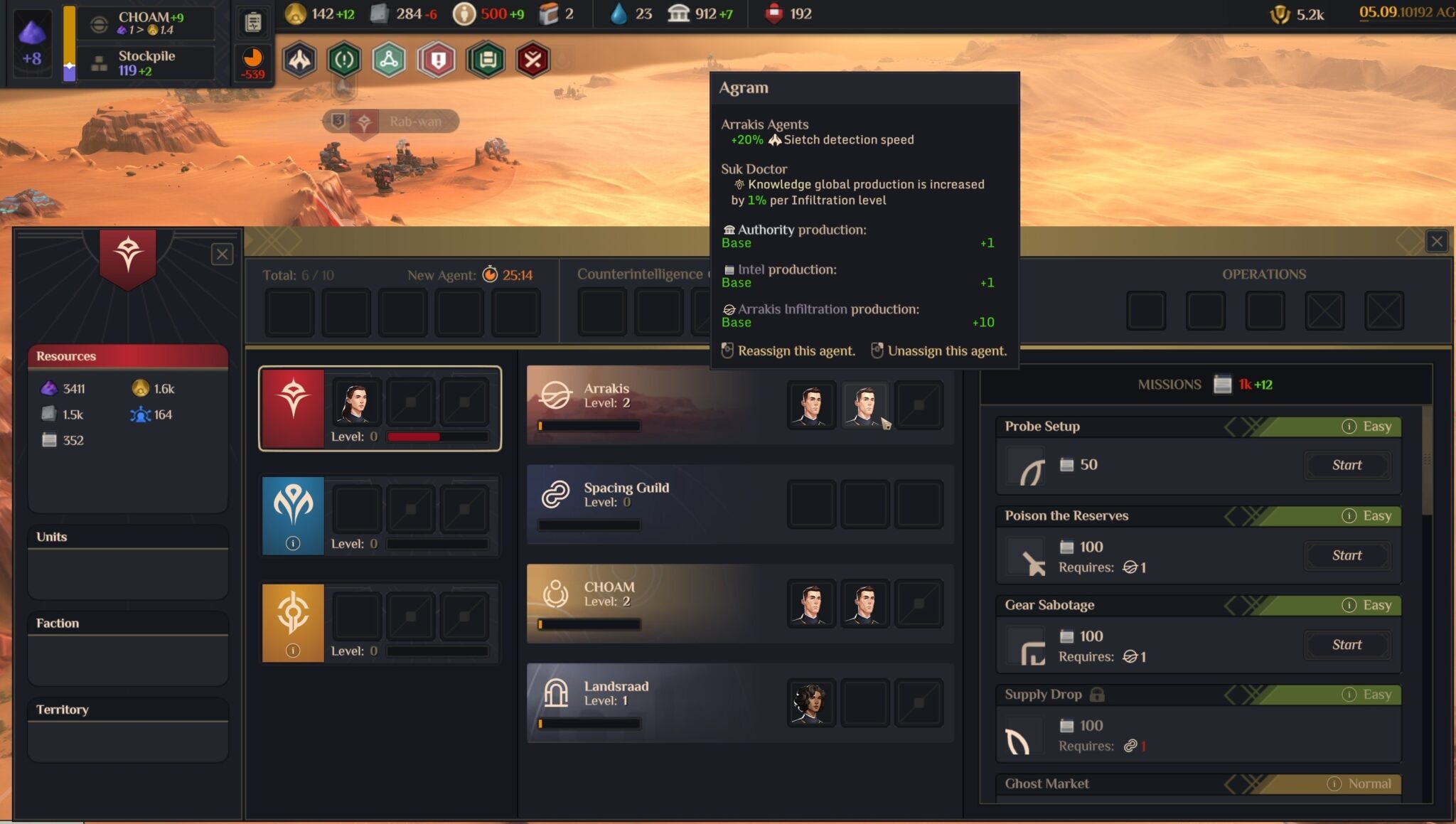
But there is still a lot of time until the currently planned release in the first half of 2023. The developers want to invest this time primarily in balancing, the fifth faction, a campaign and the multiplayer mode.
Preliminary evaluation box
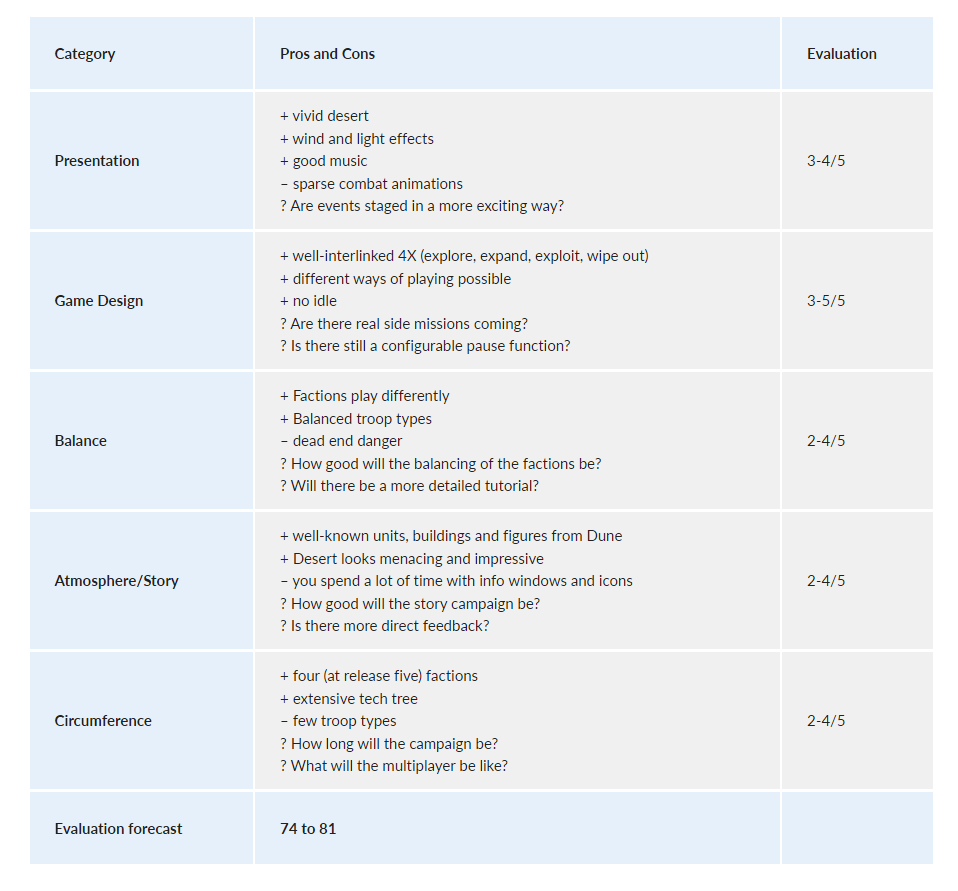
Editorial conclusion
plays on Tatooine over and over again, Boba Fett anyway, and in between the new Dune movie hit the theatres. And now Spice Wars? Of course! Because here, too, the desert is alive and kicking and almost the main character. I have to make sure I get enough water, take care of my infantrymen on the march, constantly scan the surface with my iconic ornithopters. There’s always something to do, and at the moment that’s both a curse and a blessing: Spice Wars urgently needs an automatic pause as soon as something important happens. Research is done, a new agent is ready, the next vote starts – a configurable (!) pause would be better than small buttons that are easily overlooked. Fortunately, something like this is implemented quickly so that developer Shiro Games can concentrate on the essentials, especially on the announced campaign and the balancing of the planned five factions. After all, the Harkonnen and Fremen alone have completely different orientations. With the planned nine to twelve months until the official release, including multiplayer mode, the team has enough time to do this. I’m already looking forward to it!


